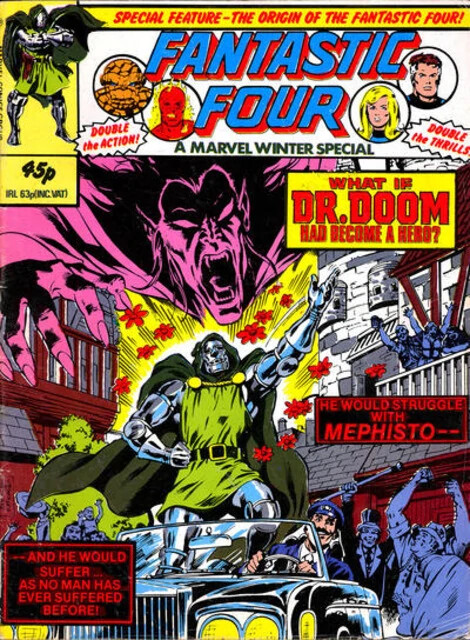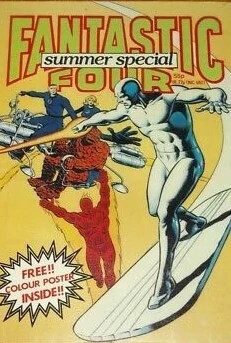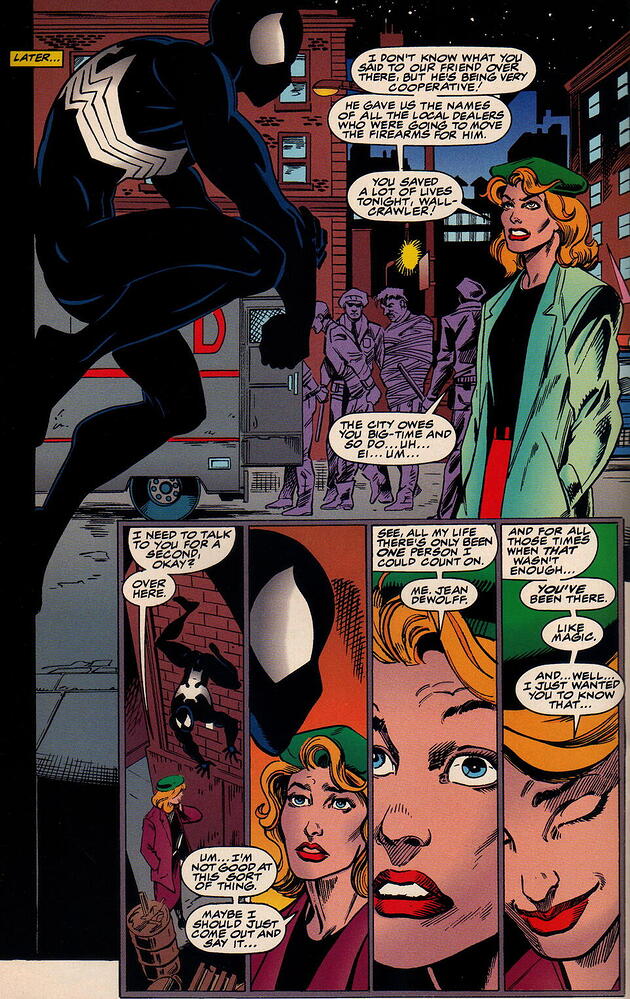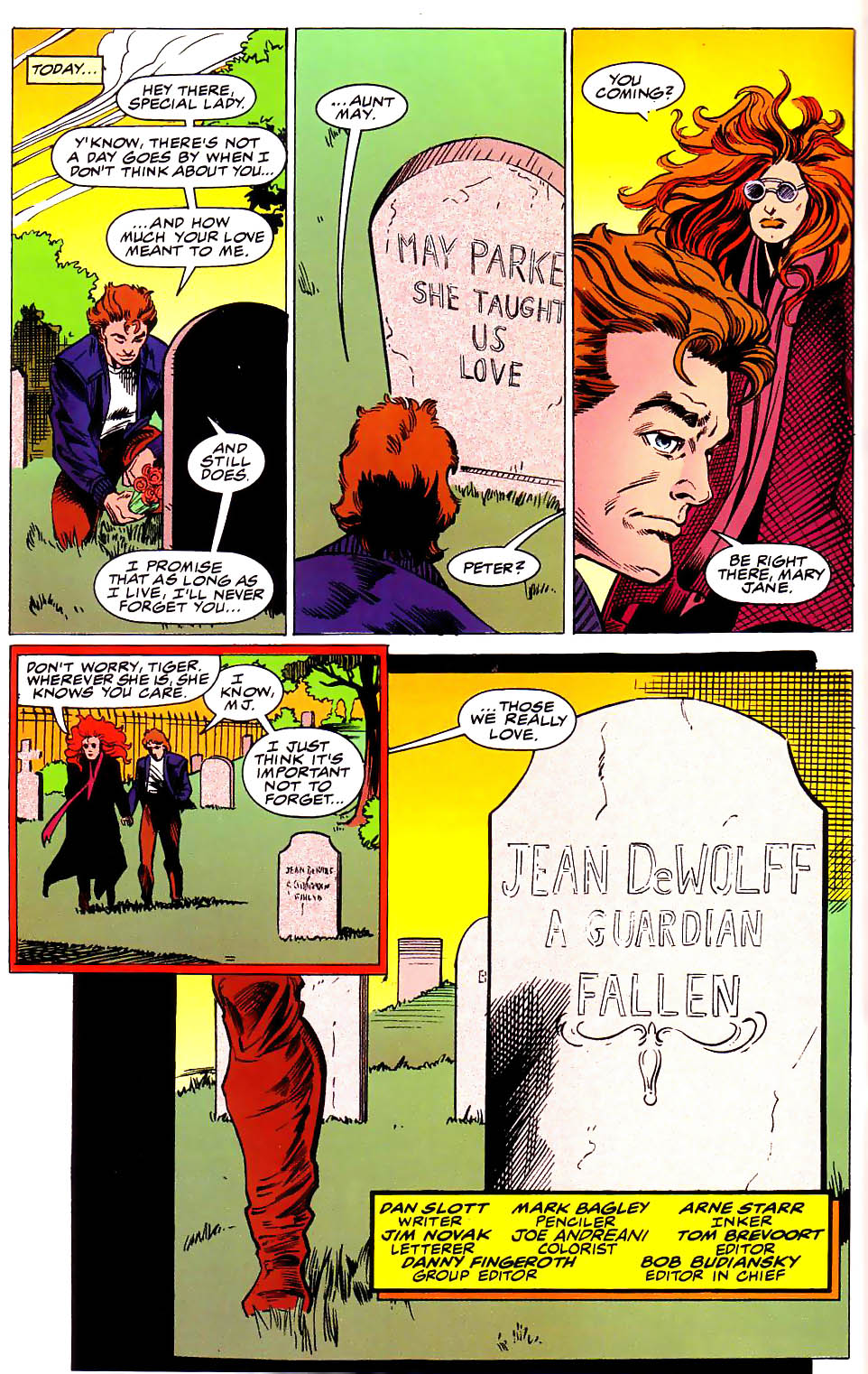Faudra que je demande au compte tweeter qui l a posté
Parfois, il faut avoir le sens du sacrifice 
J’en ai un Sailor Moon récupéré à Japan Expo, où il y avait des distributions gratuites d’une boisson… Il fallait seulement réussir à choper le stand itinérant à un moment où il faisait une distribution.
En tout cas, il est bien chouette ! ~___^
Tori.
De mémoire c’est la première histoire du Tisseur que Slott écrit non ?
Oui, au moins concernant son second passage chez Marvel (de 2004 jusqu’à aujourd’hui).
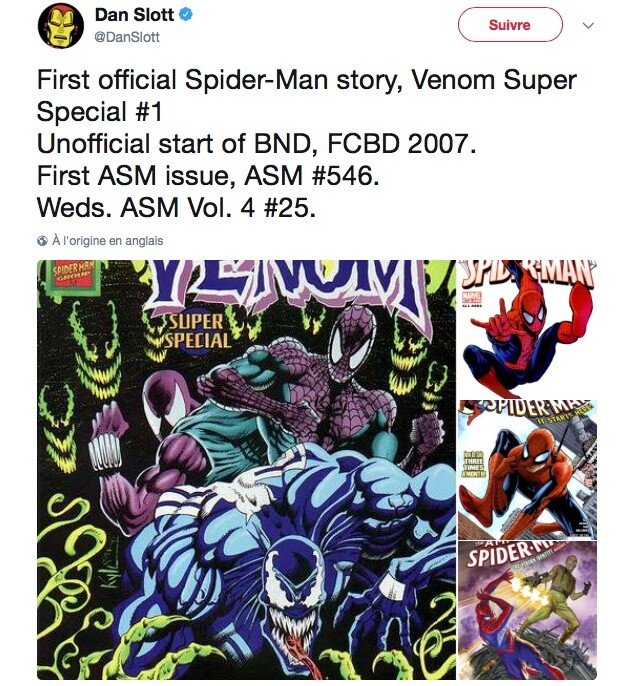
During the big argument on the CBR Forums over whether or not the demonic dissolution of the marriage of Peter Parker and Mary Jane Watson would ever be reversed, Dan Slott was accused of having a hand in the decision in the One More Day storyline.
Slott detailed exactly what happened, which also gave us an insight into the process at that time.
Slott: "That was a retreat where Civil War was in full swing, Spider-Man’s unmasking in CW had already been decided, and JMS had already run everyone in the room on the concept of OMD in the retreat before. I was brought into my first retreat for 2 reasons:
Two of the core Marvel writers were sick and/or couldn’t make it, and there were empty seats at the table. By living in NYC, I was an easy person for Marvel to go to, because they didn’t have to fly me in or put me up in a hotel.
They were planning the aftermath of Civil War, Millar had clearly set up the Initiative, but no writer was moving on the idea as a series. Peoples’ interests were in other places. I’d heard about the Initiative and ran a pitch for it by some people– who liked it– so they thought it would be good to have me in the room to pitch it in person.
Now keep in mind– at this point in time, I was the writer on two low-selling titles/cult titles: SHE-HULK and THE THING. I did not have much “coin” to spend in that room. I did throw out some ideas for all kinds of things to help out in the room– and people liked my Initiative take enough for it to be greenlit in the room as a new book for me– but the idea that the SHE-HULK/THING guy was going to make any major change to JMS’ ASM storyline– especially one that was on the tracks and that important– is kinda silly.
It was after my 2nd retreat, where I’d performed really well (and the Initiative was doing well) that Wacker and the powers that be thought I’d be a good addition to the multi-writer team that would be following JMS. (I’d also conspicuously shoe-horned Spidey into everything I’d been working on– SHE-HULK, THING, and A:TI for guest issues and multiple cameos. It was very UN-subtle.)
And that was something I didn’t find out about till after my 2nd retreat.
Cut to the 1st Spider-Retreat (a min-retreat just for the BND Spider-Writers), that is the first and only time I (and the other writers) had any input into OMD in any meaningful way that stuck. JMS kept switching between TWO versions of OMD:
1 where the bargain altered time from AMAZING SPIDER-MAN Vol. 1 #96 (the Goblin/Harry drug issues).
And 2, where the bargain altered time from the WEDDING ANNUAL.
The first choice was the one JMS felt passionate about. But at one of the retreats, the Powers That Be, editorial, and pretty much everyone in the room (except for Joe Q and one of the writers) voted that version down because it altered too much continuity. There was a common consensus (that Joe Q agreed with too) that as little continuity should be disturbed as possible. That through whatever means ONLY the wedding story itself should be altered, and that practically every story you saw since took place exactly the way it happened in the comics, with the exception that Peter & MJ were living together and not married. JMS wanted an altered continuity that was so drastically different from EVERYTHING that took place in Marvel Publishing since 1971, that Gwen Stacy would still be alive– had been alive all those years– and would be up and walking about in the current book Post-OMD.
I was one– of practically all the bodies in that room– who, in that binary choice, voted that version down in favor of the one that would cause the least amount of continuity ripples.
At the 1st Spidey Retreat, all the BND writers were given the option to veto that. If we wanted, we could give the okay for the ASM #96 alternate history– complete with a living Gwen. All the BND writers– in total unison– said we didn’t want that and that we were good with the decision as it stood.
The OMD story needed an ending where it was clearly in the Post-OMD setting. We were asked to come up with two potential love interests who’d be around during BND– and if they could both be at a party sequence in the final pages. Those characters wound up being Carlie Cooper and Lily Hollister.
So… My OMD involvement came down 3 things:
Voting in lockstep to NOT alter all of Spider-Man continuity from ASM #96 onward.
Voting in lockstep AGAIN to NOT veto that ruling.
Being one of the co-creators of Carlie Cooper & Lily Hollister– who showed up at a party at the end of OMD. »
Ce numéro de Venom Super Special a été réédité récemment du côté des true believers mais pas sûr que l’histoire courte de Slott & Bagley soit incluse.
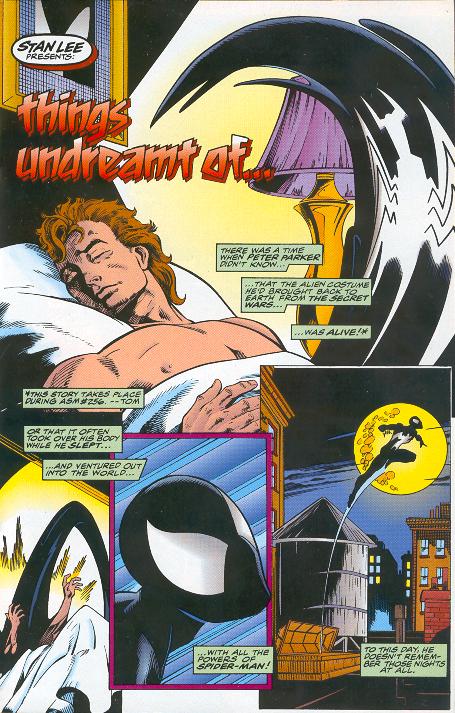
Color guide de Joe Chiodo pour les planches de Jim Lee.
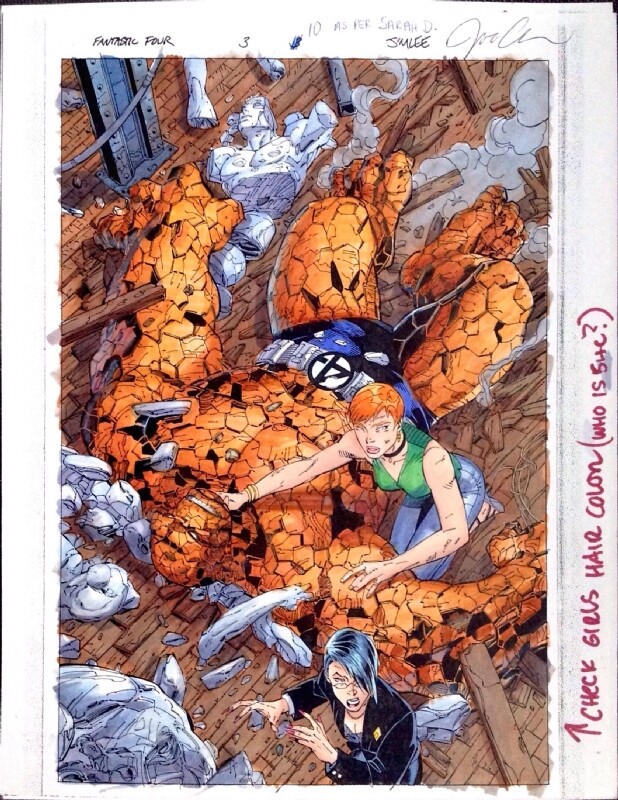
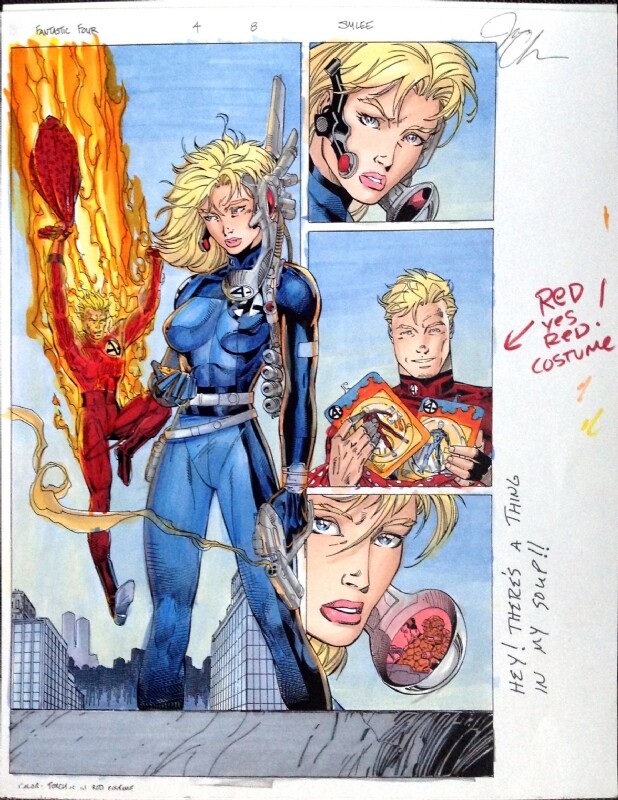

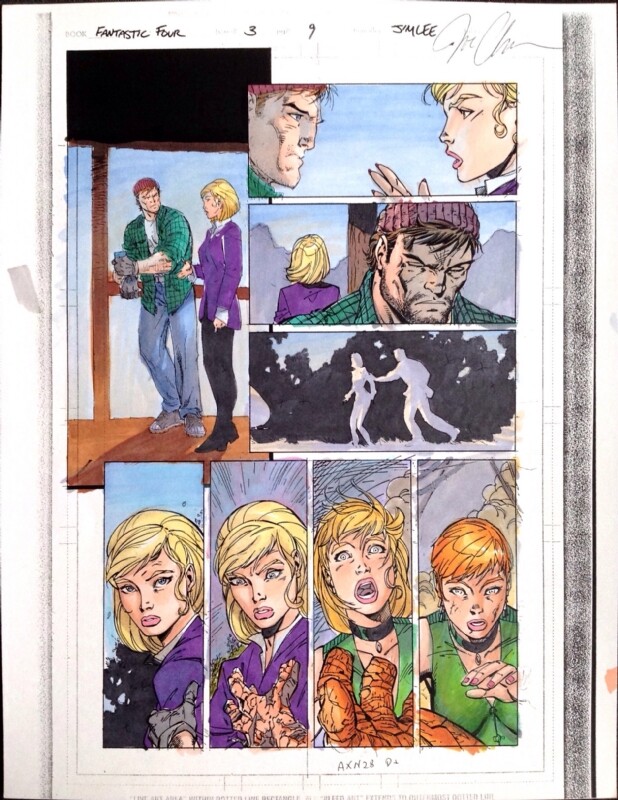
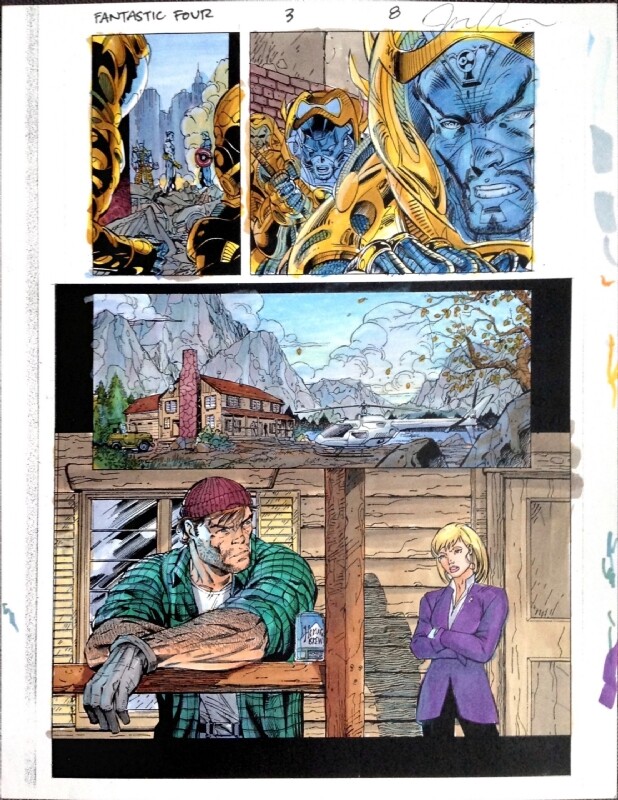
Color guide de John Kalisz pour les planches de Paul Ryan.

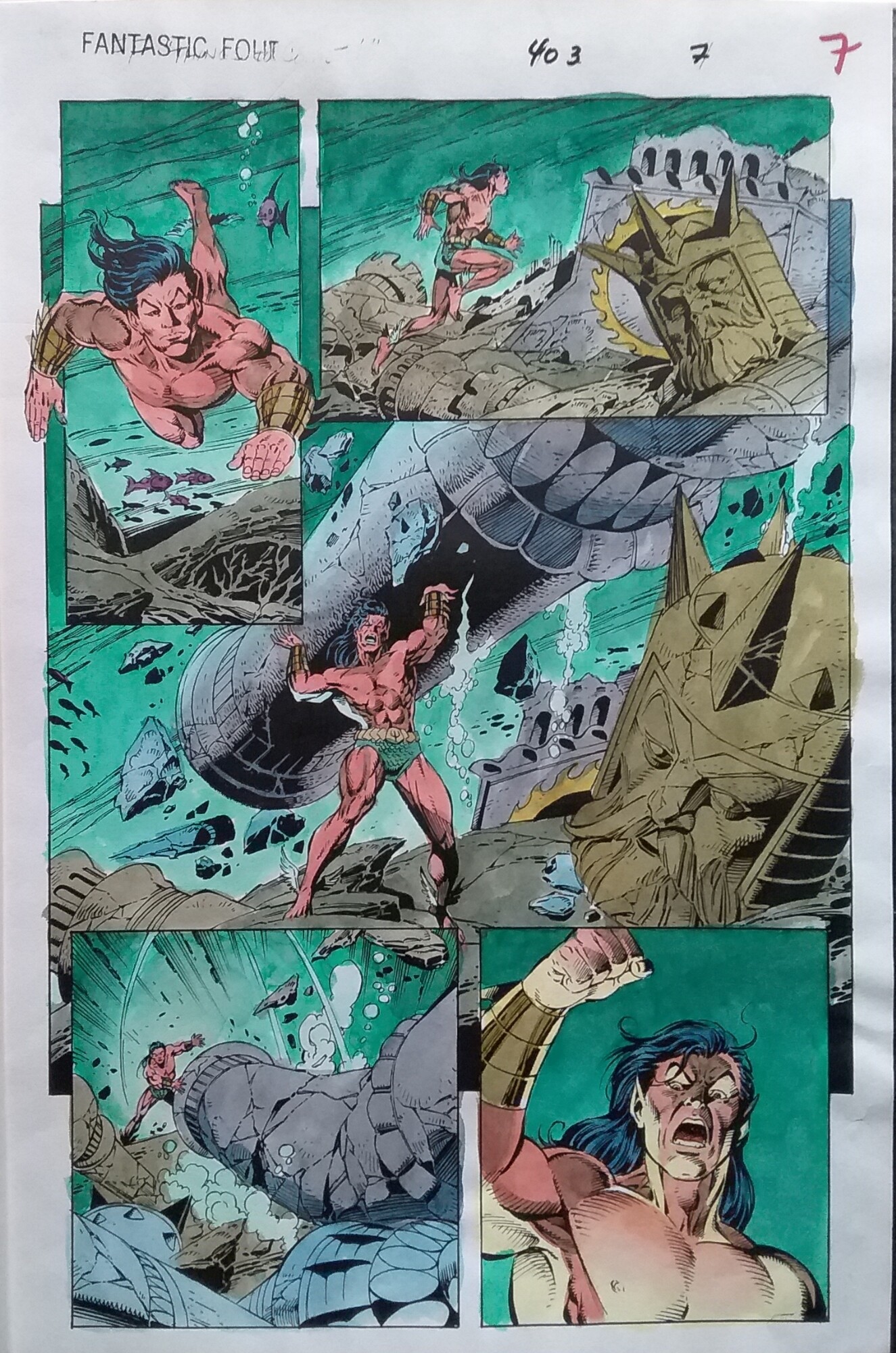

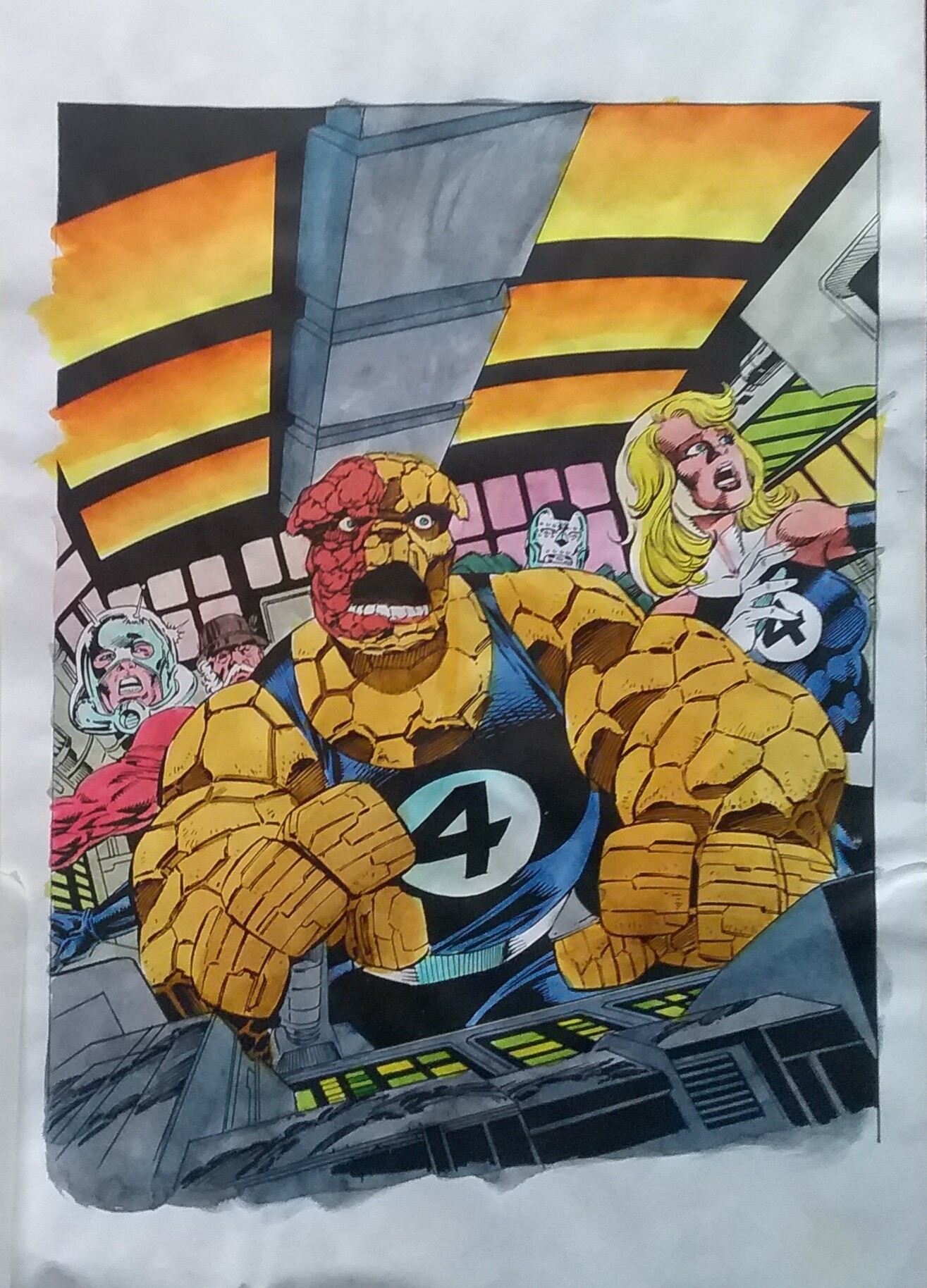
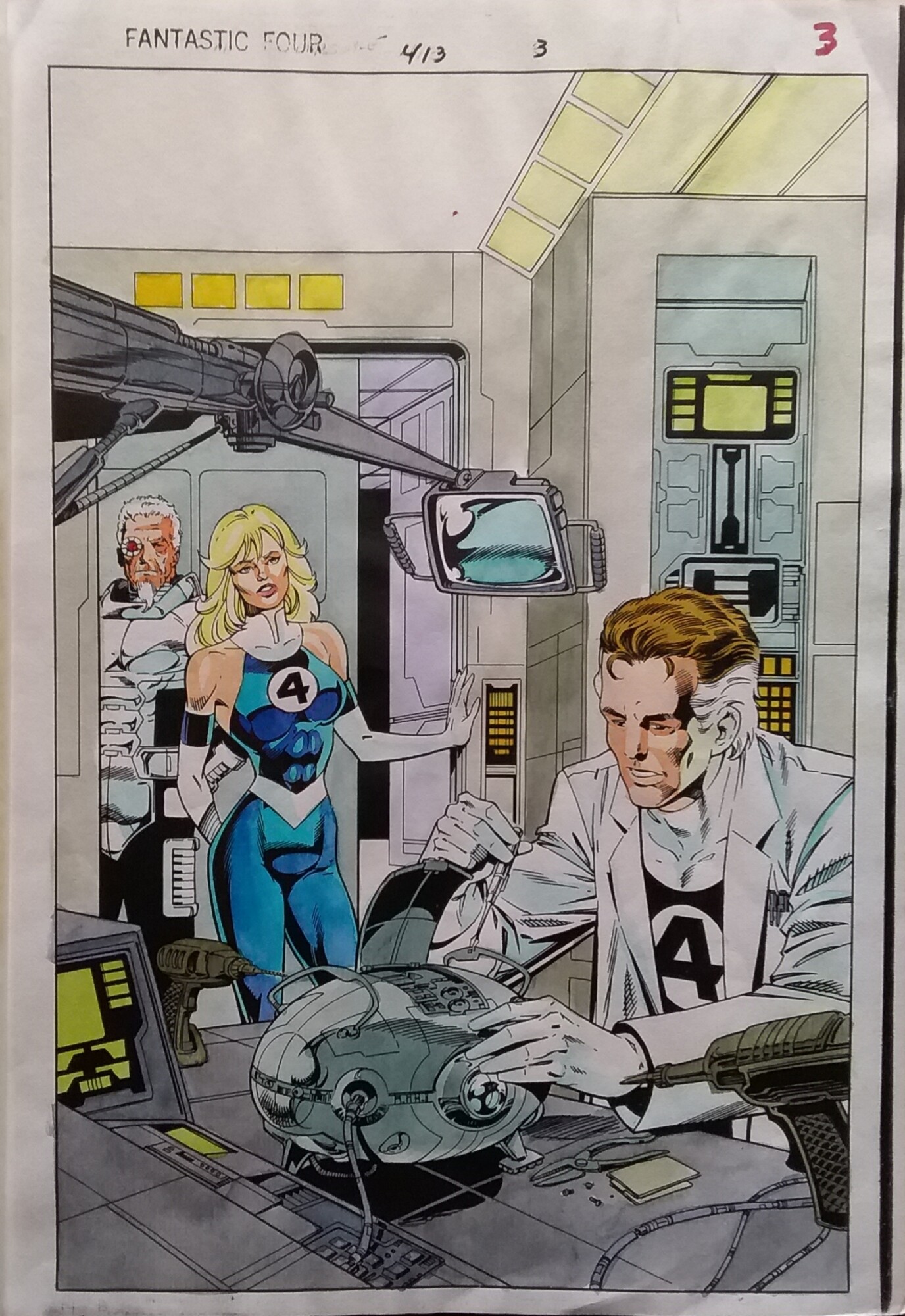
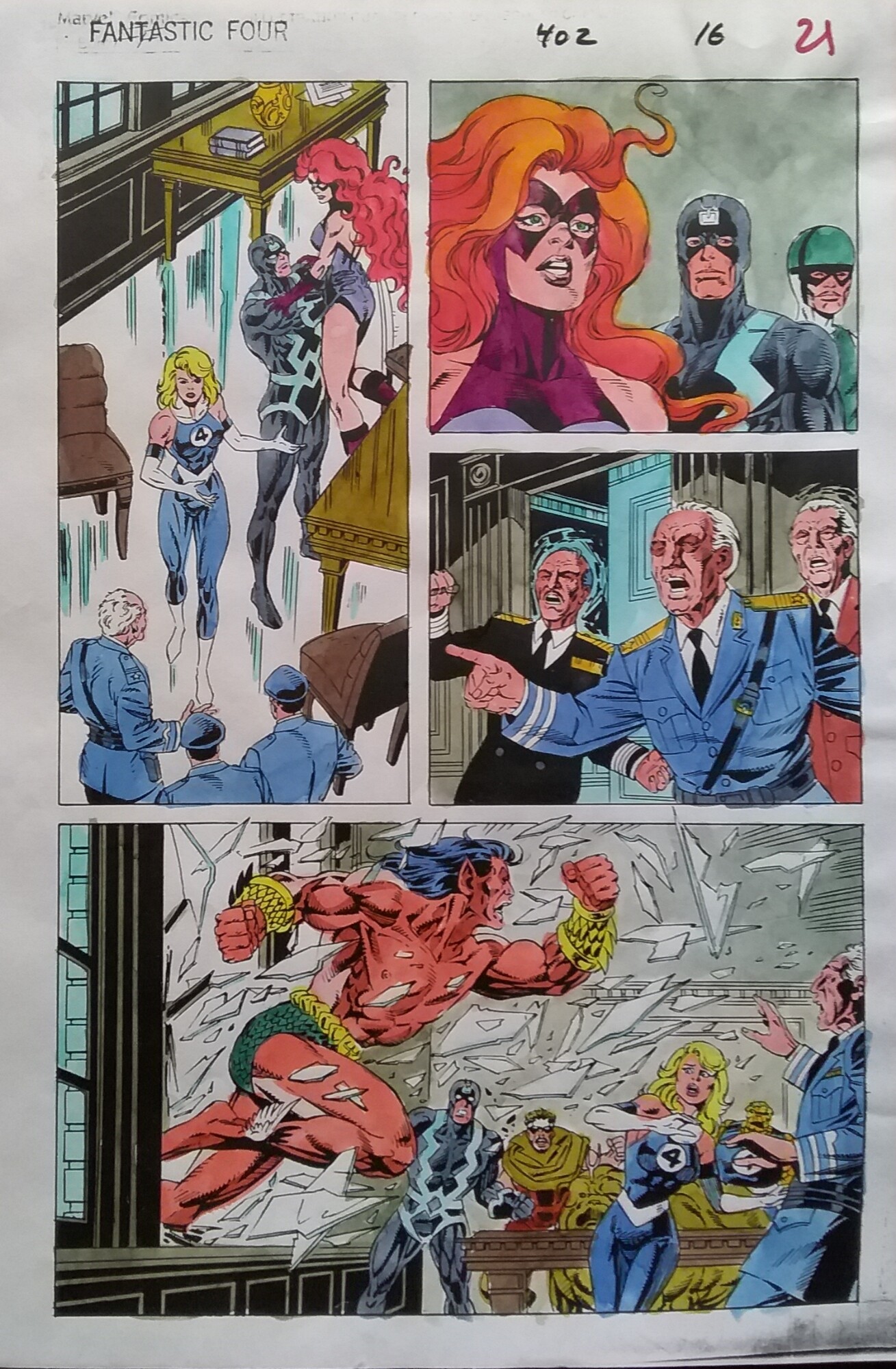
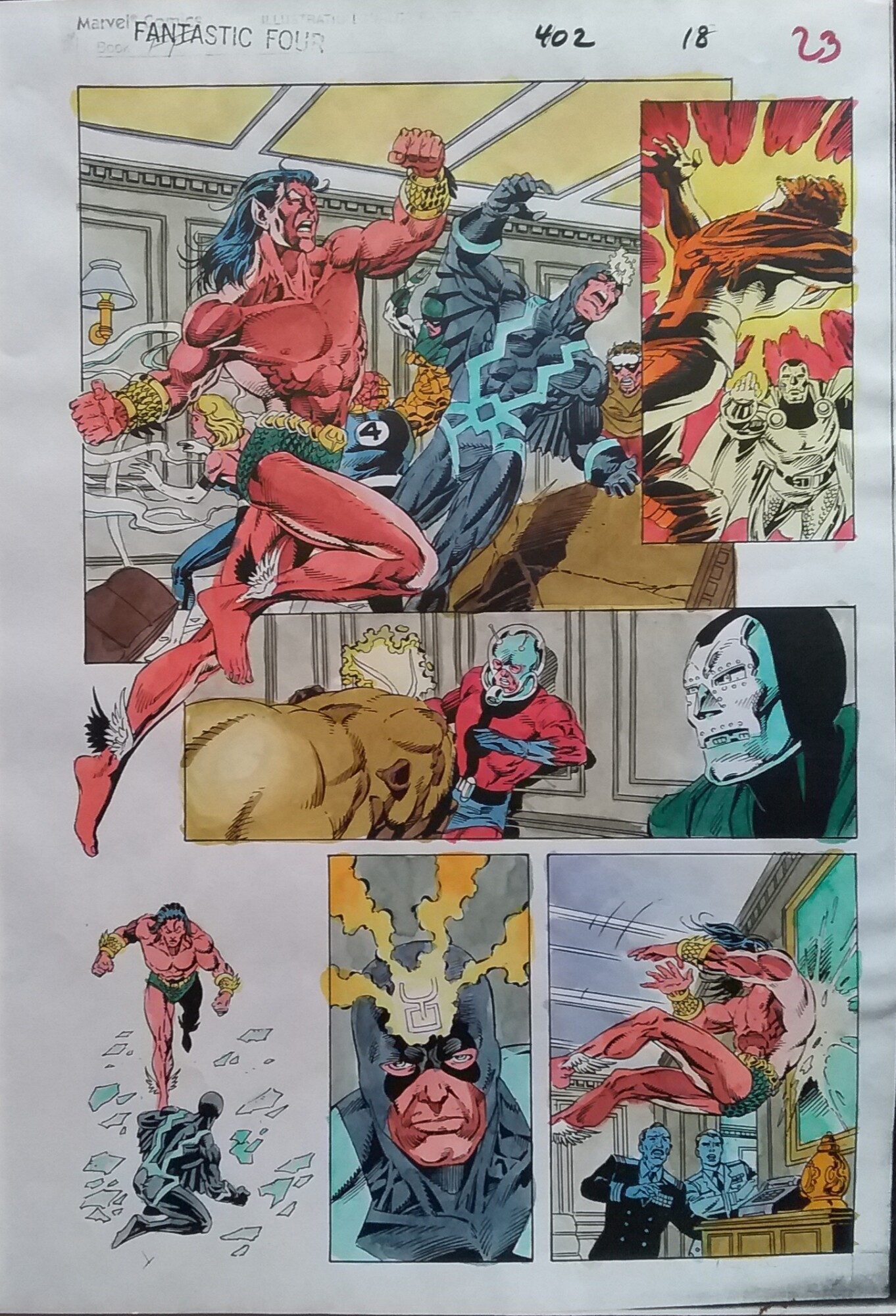
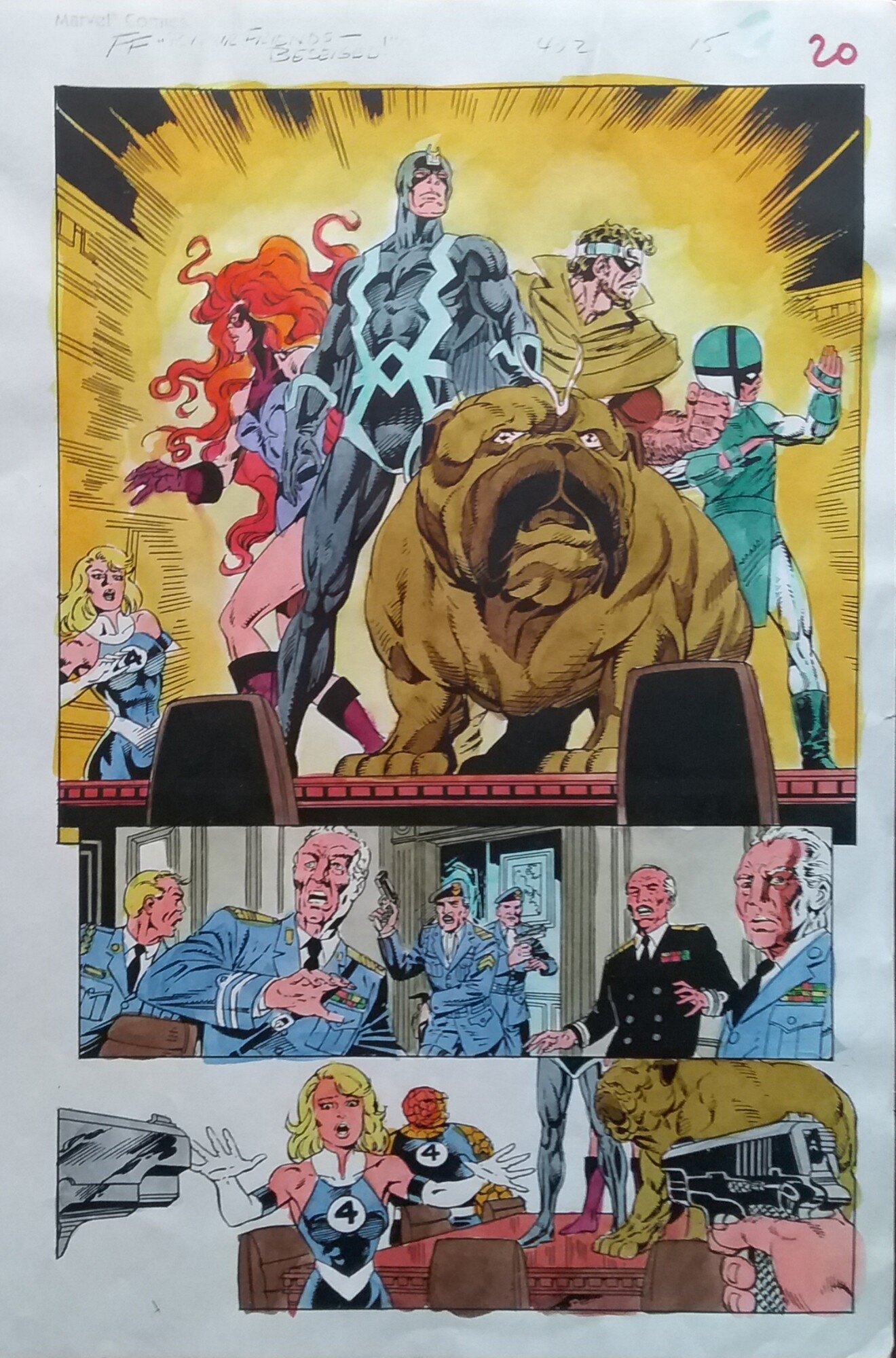
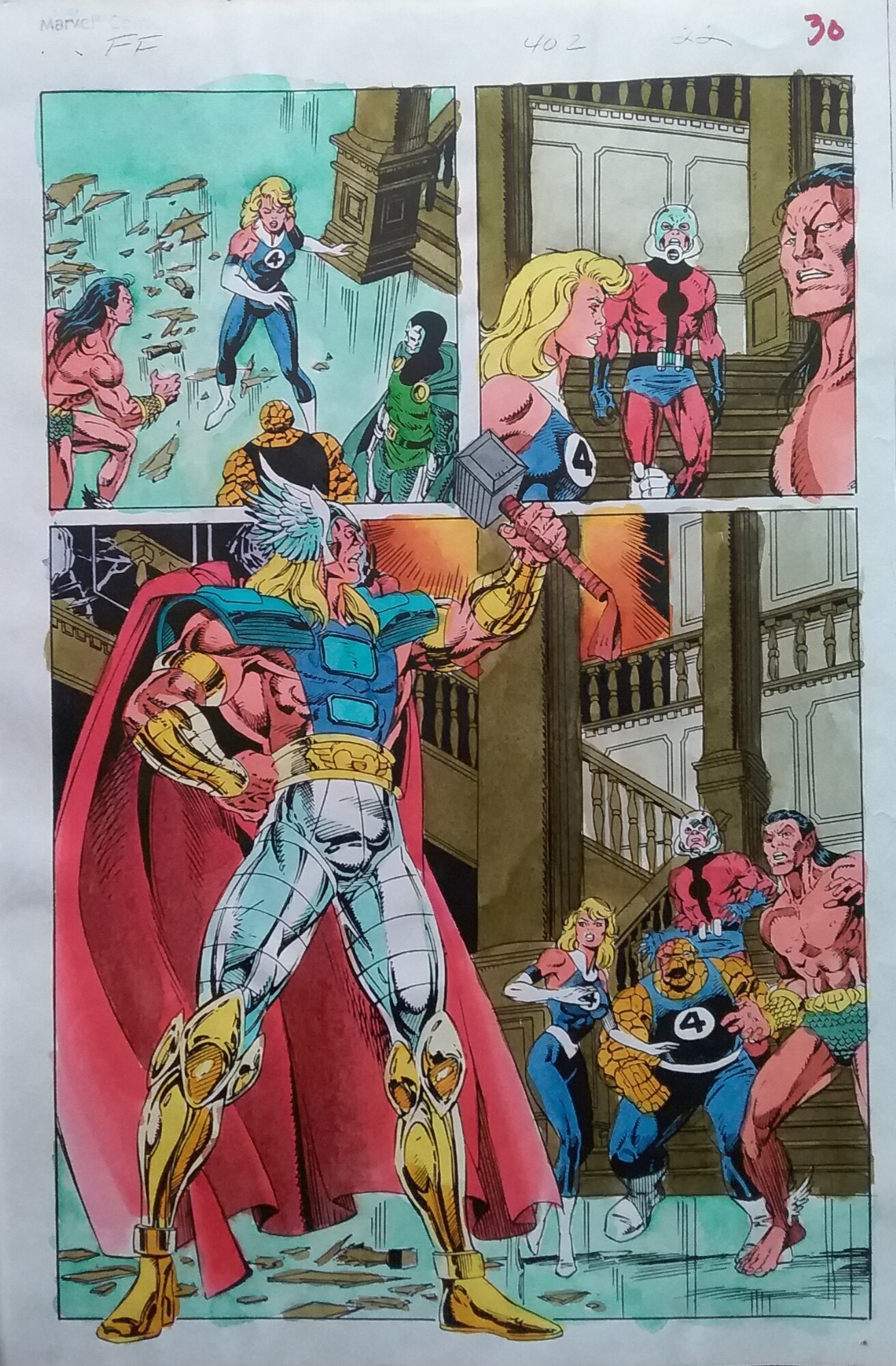
Color guide de George Roussos pour une planche de Bill Sienkiewicz (période Moench).
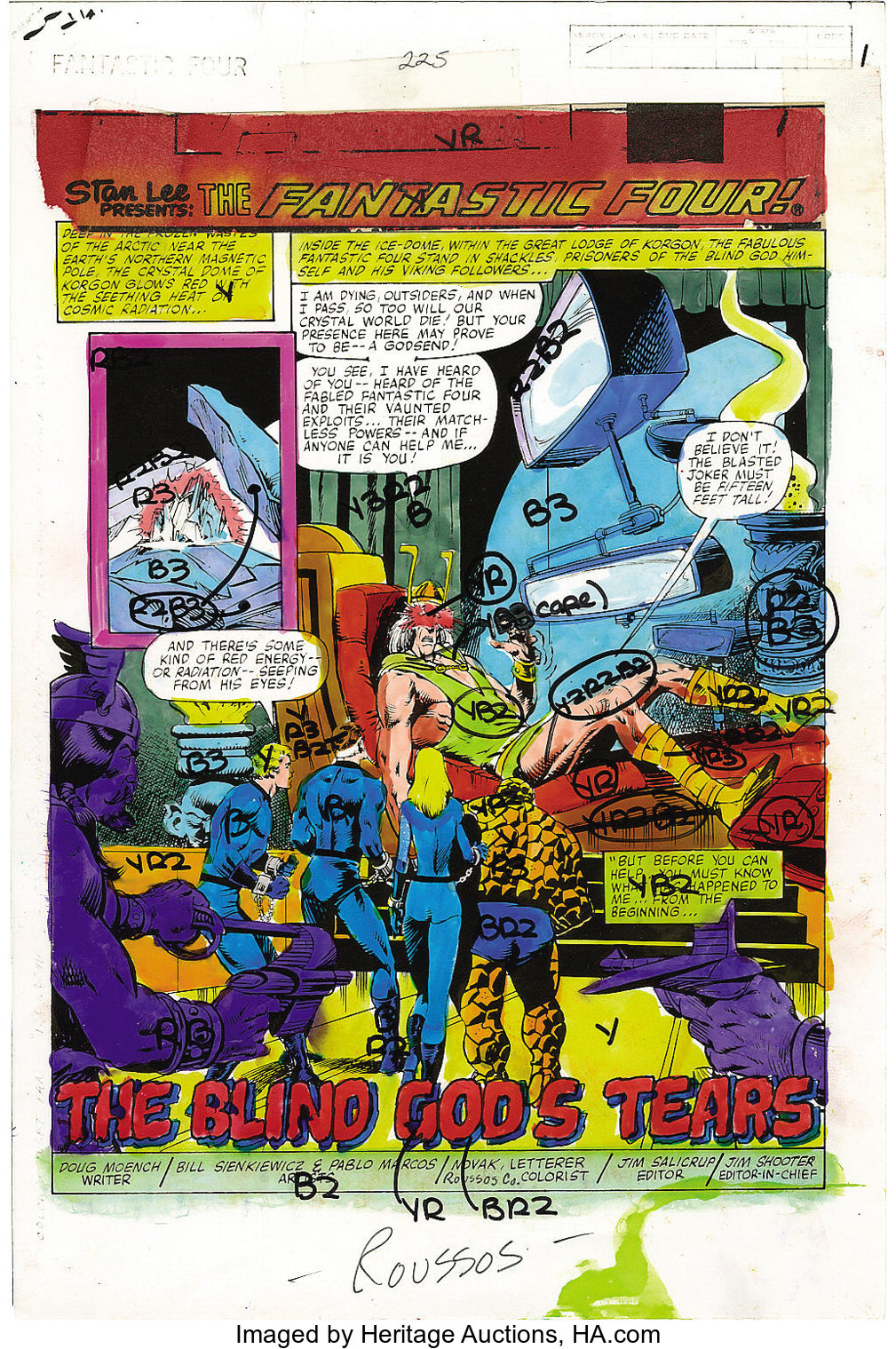
Color guide de Glynis Wein pour les planche de Byrne (« Terror In A Tiny Town », FF #236).
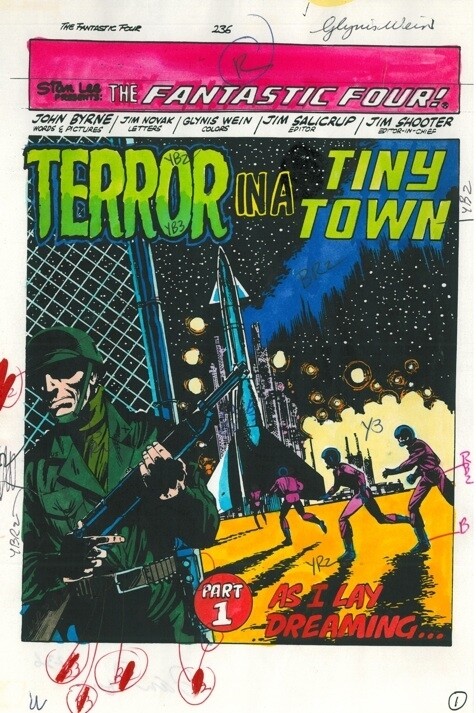
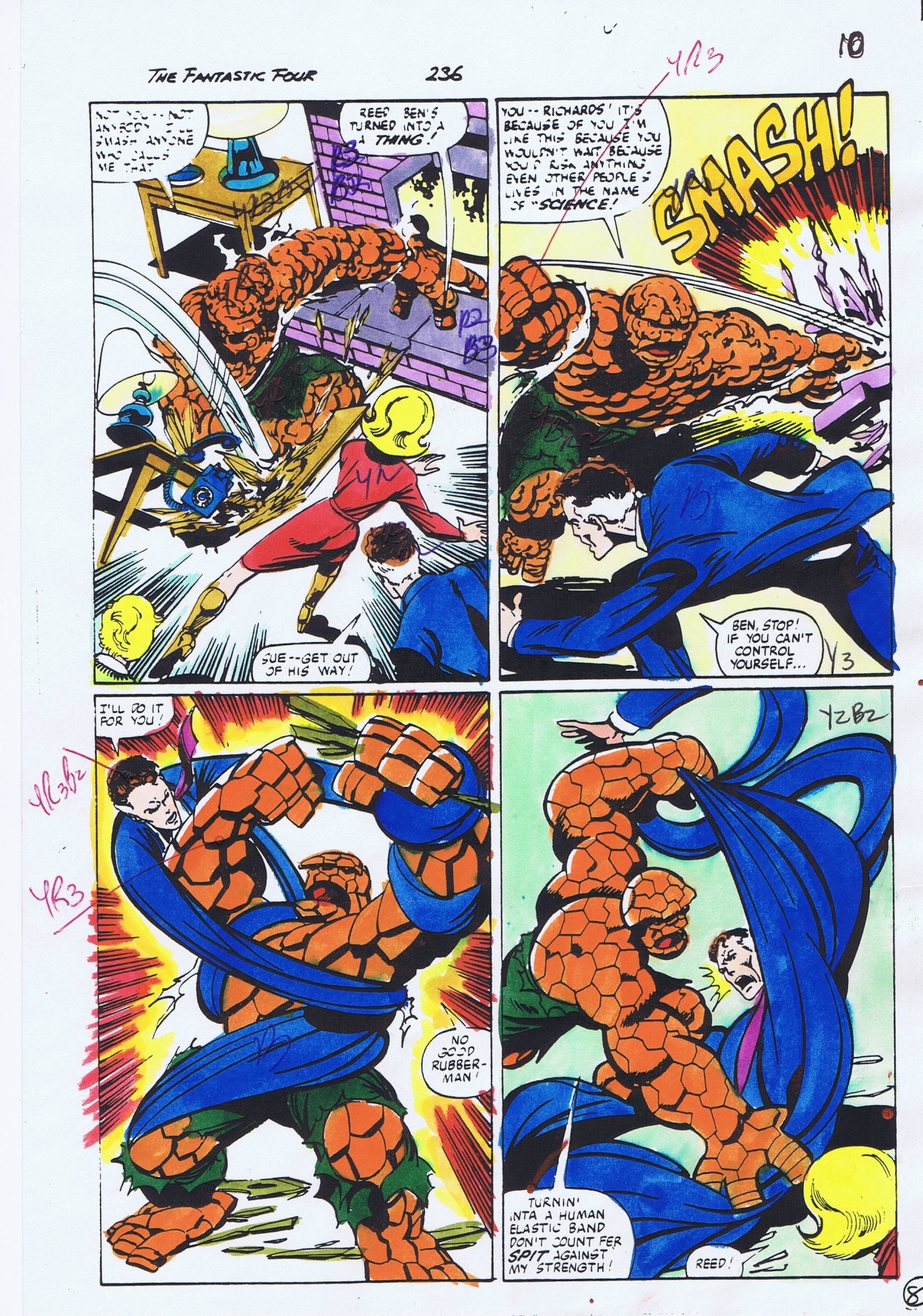
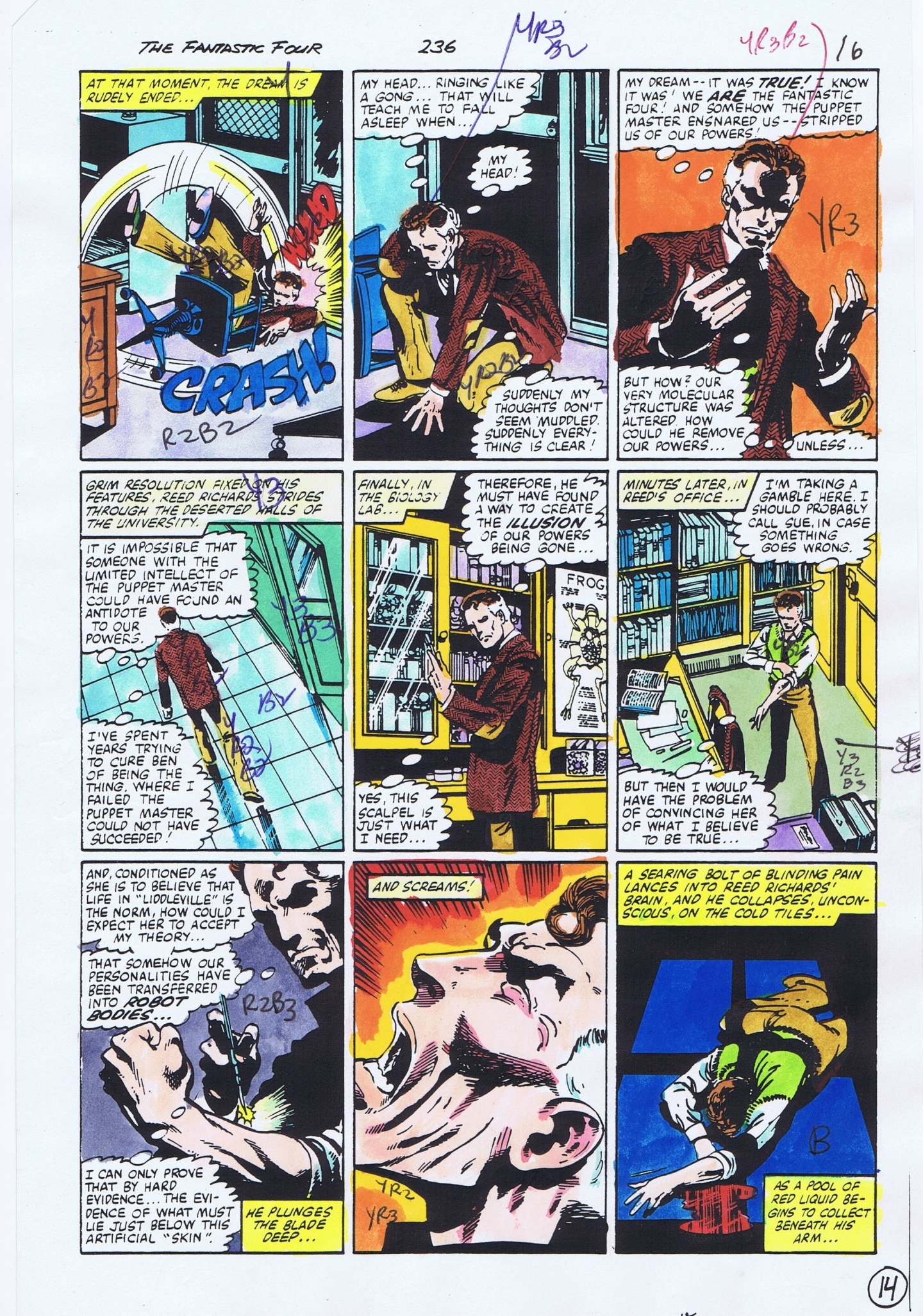
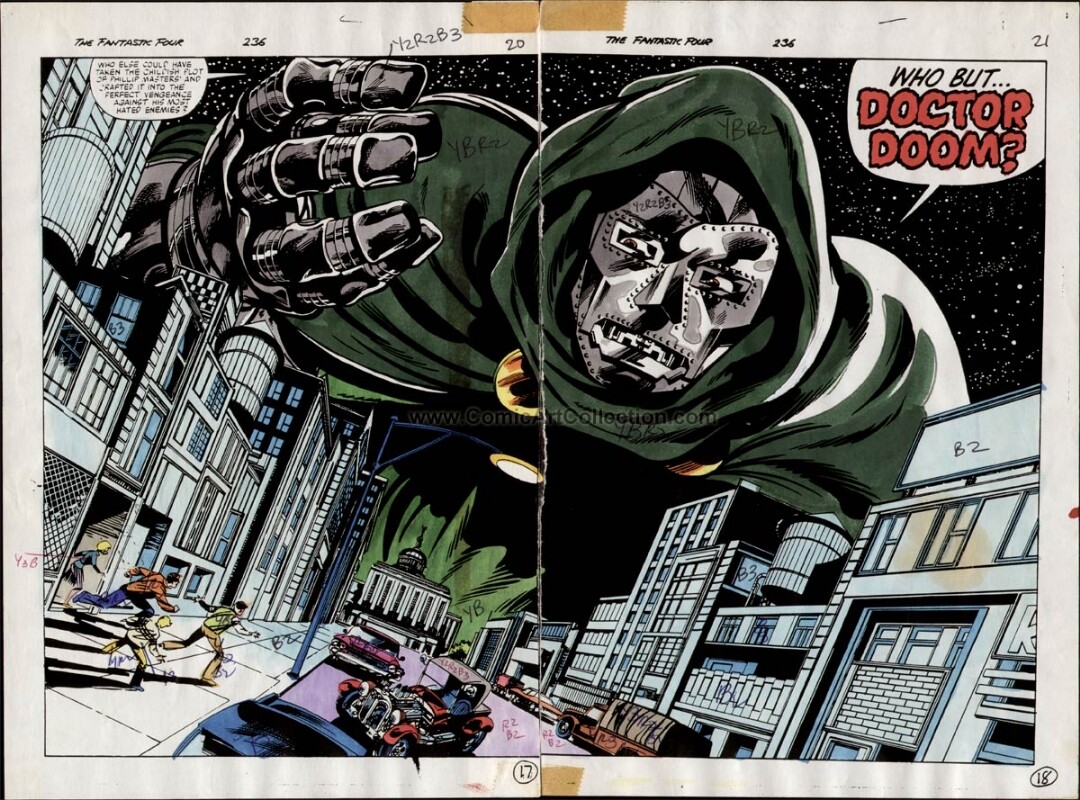

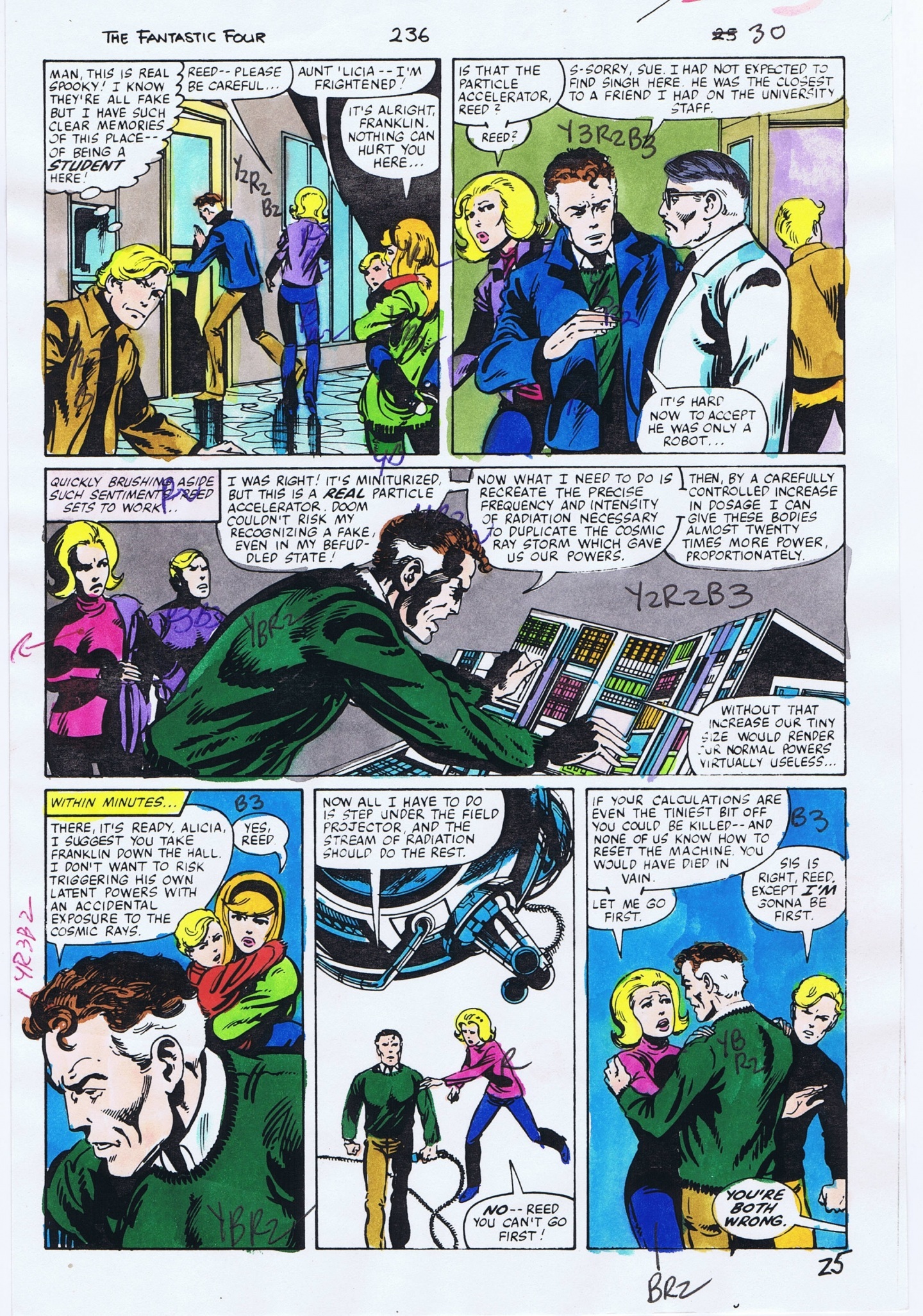
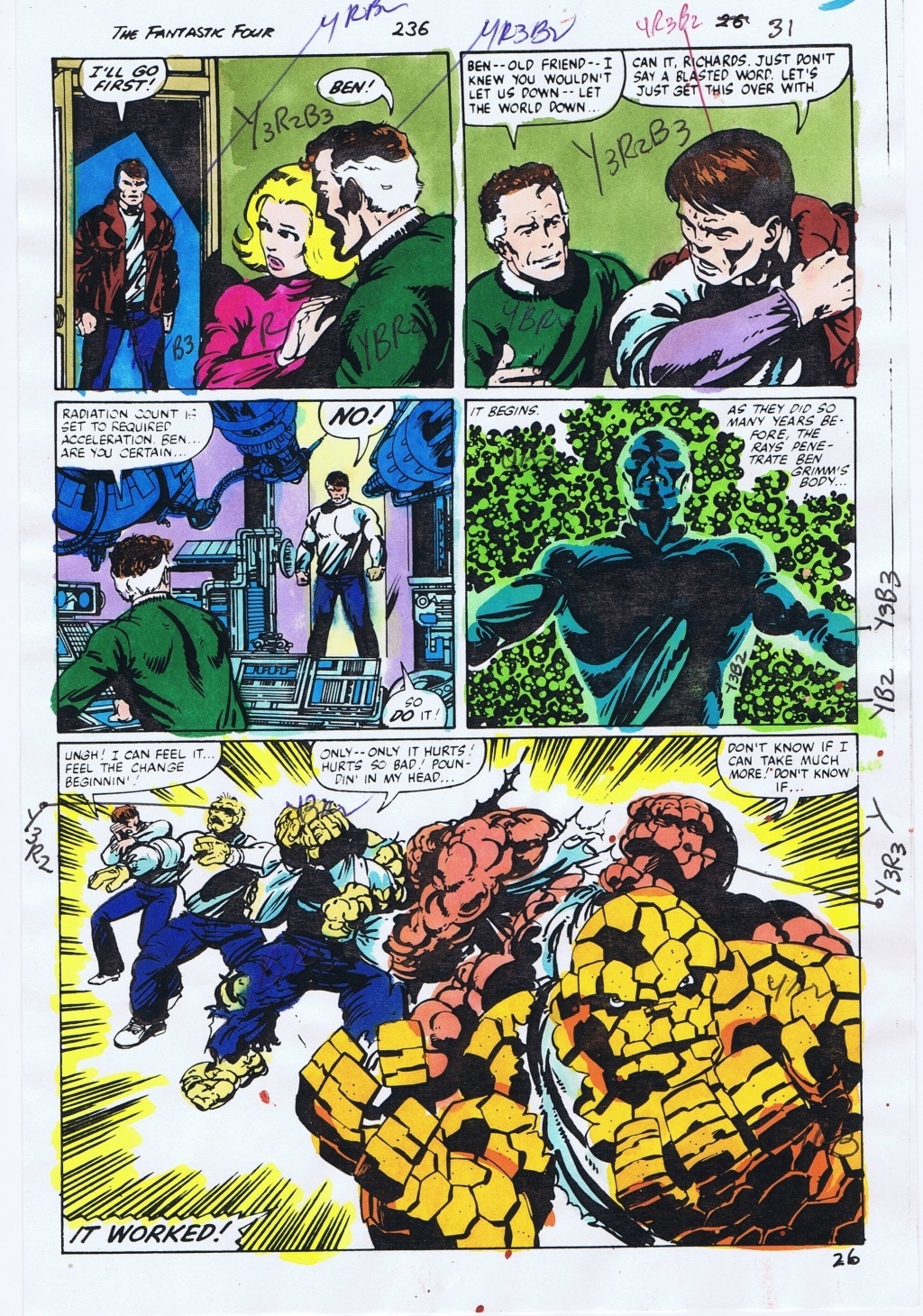
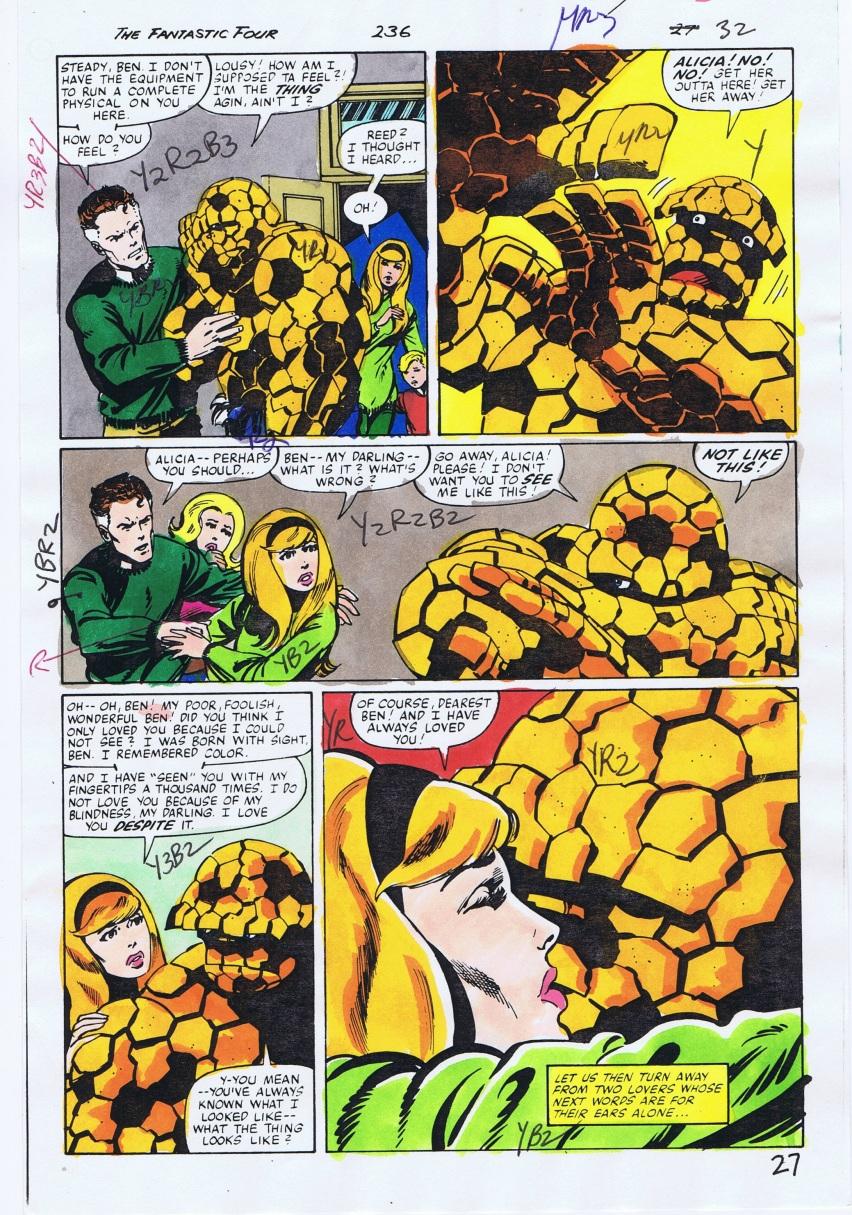

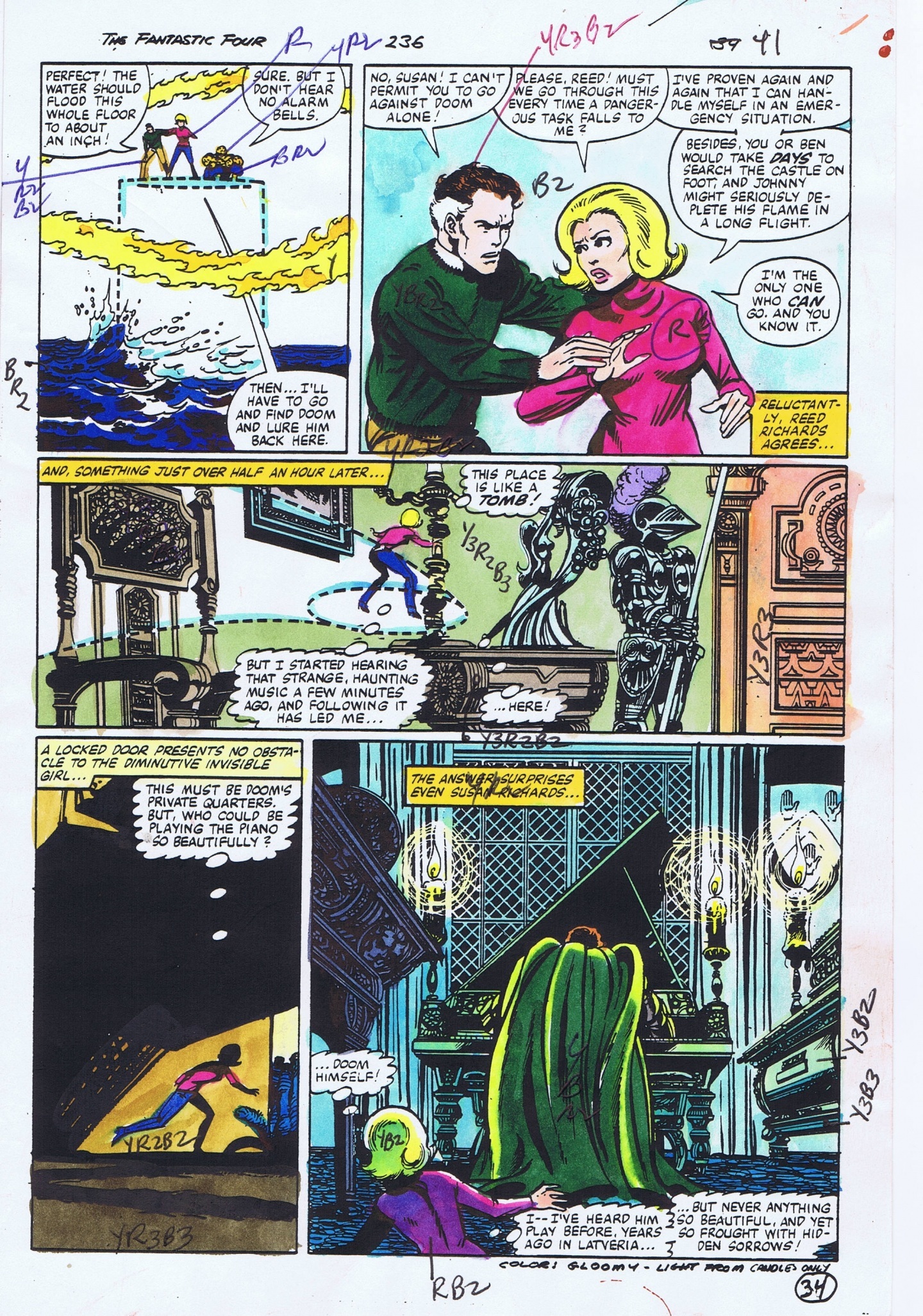

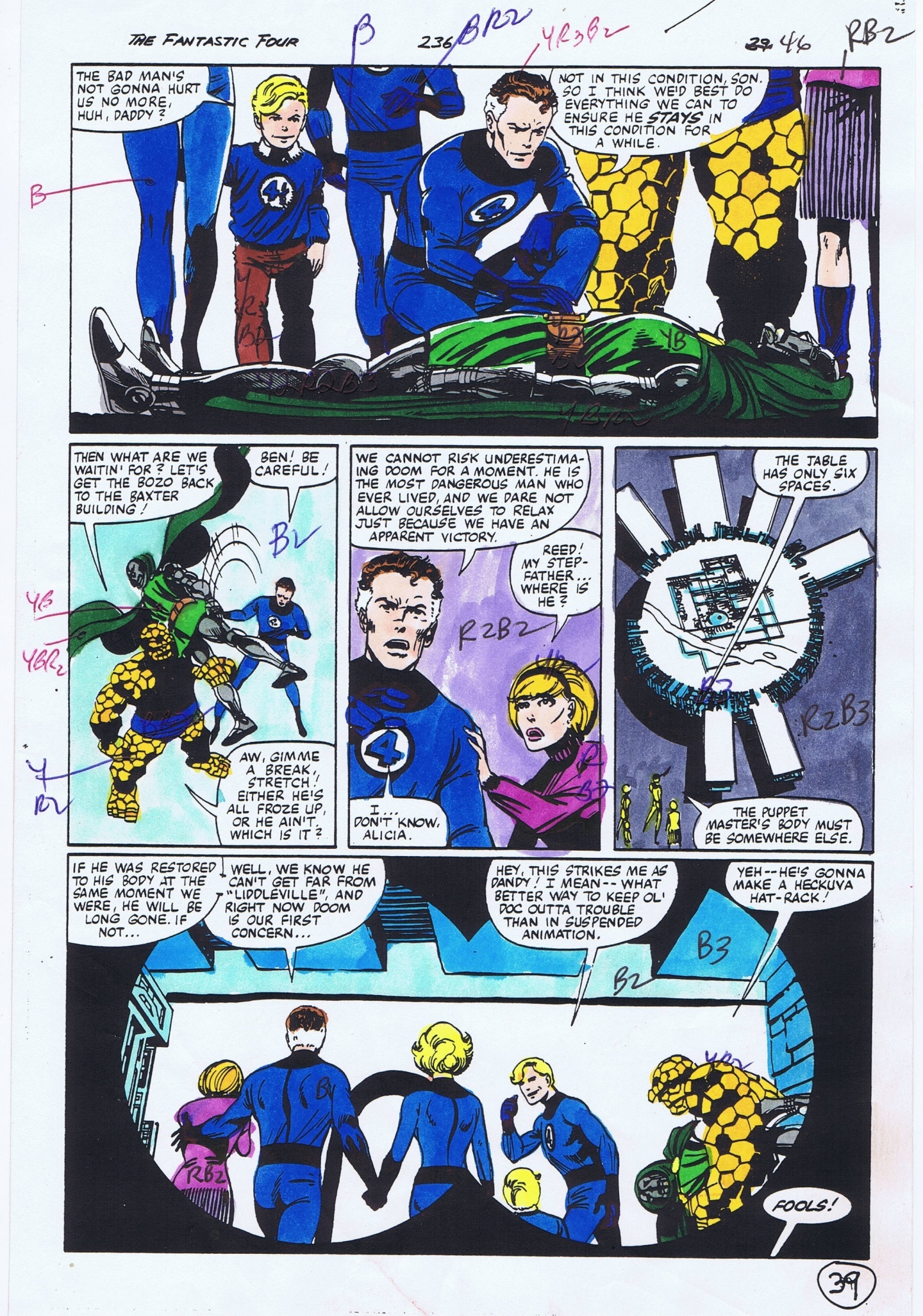

Color guide de Glynis Wein pour les planche de Byrne (FF #237-241).
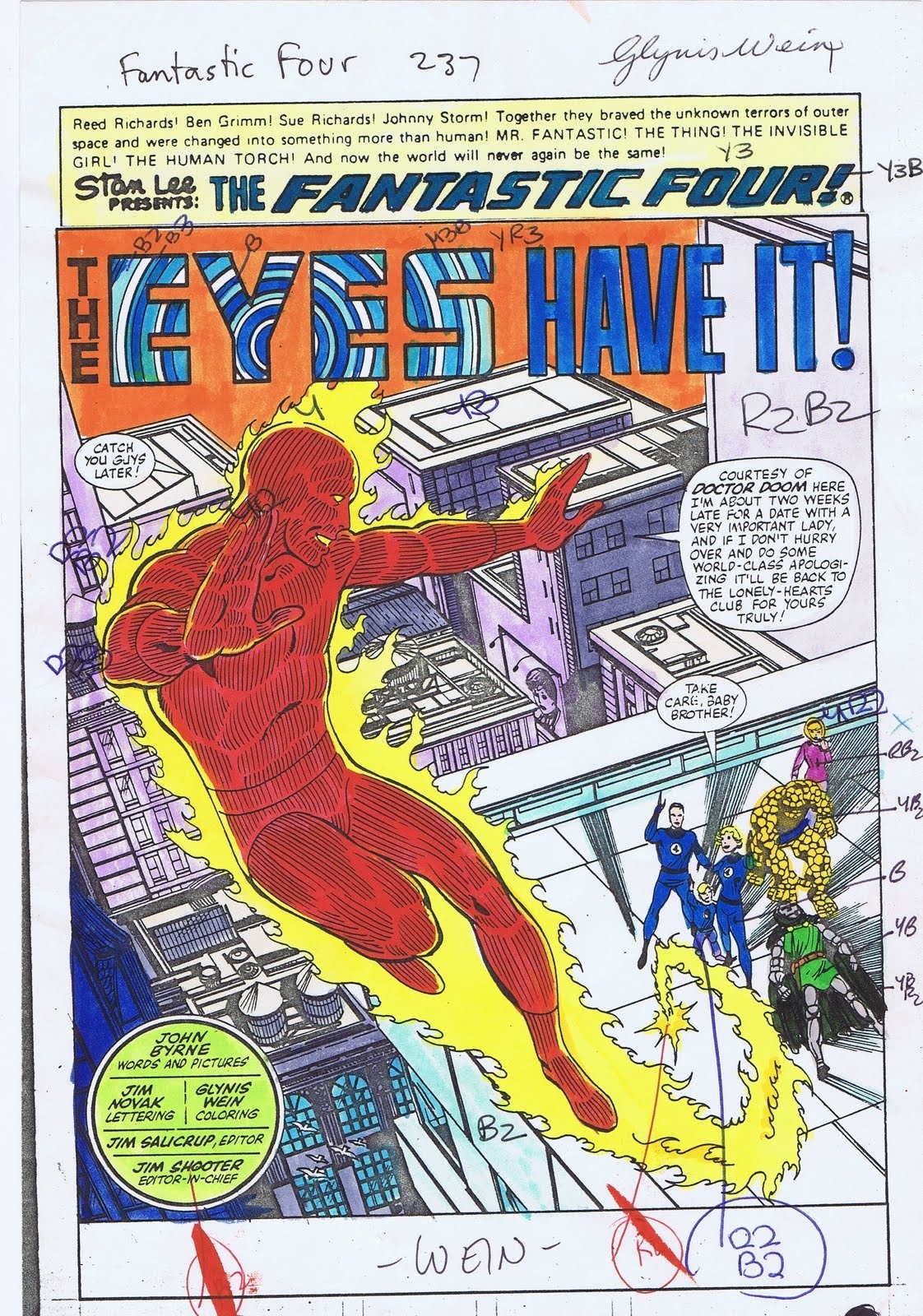
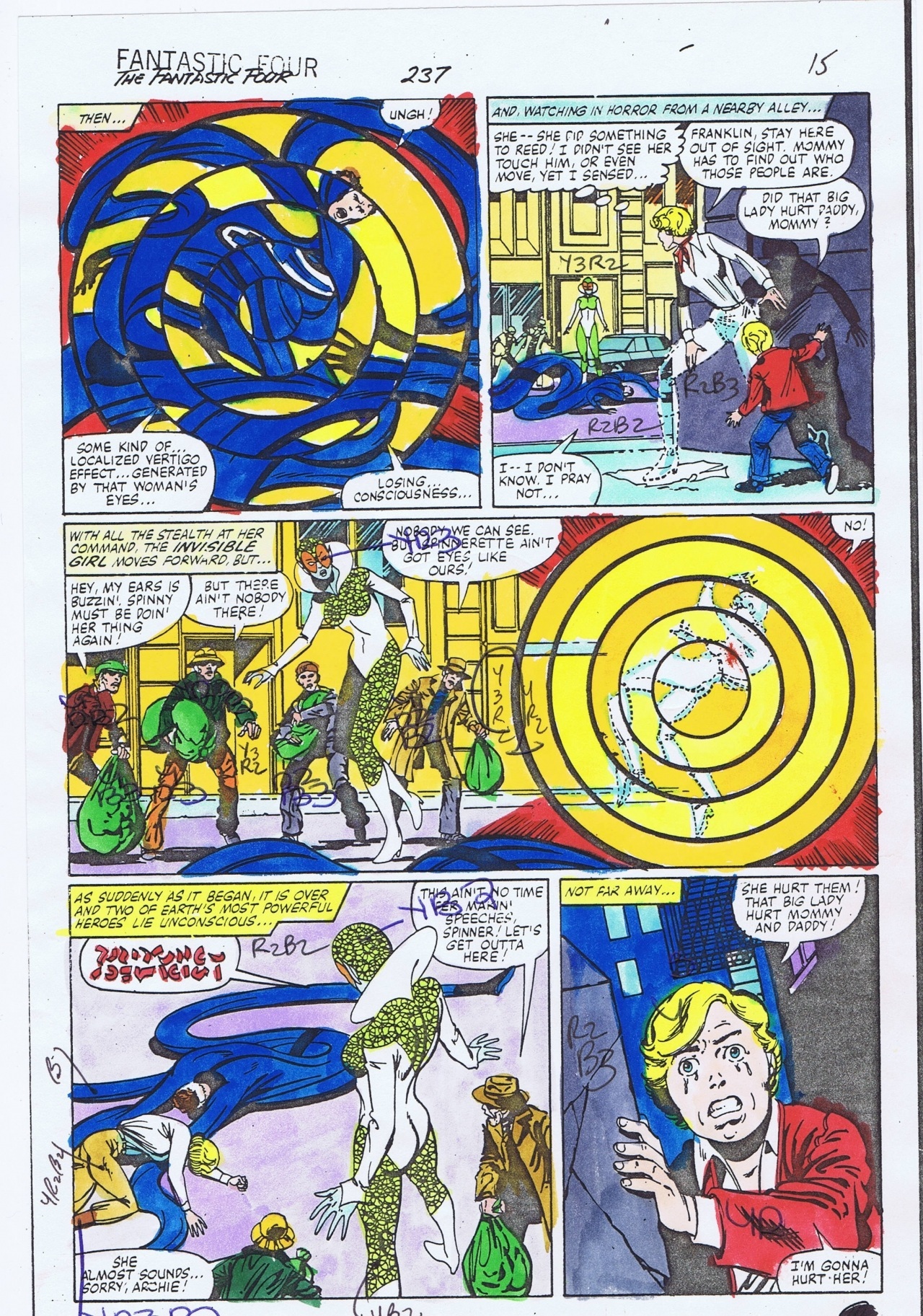
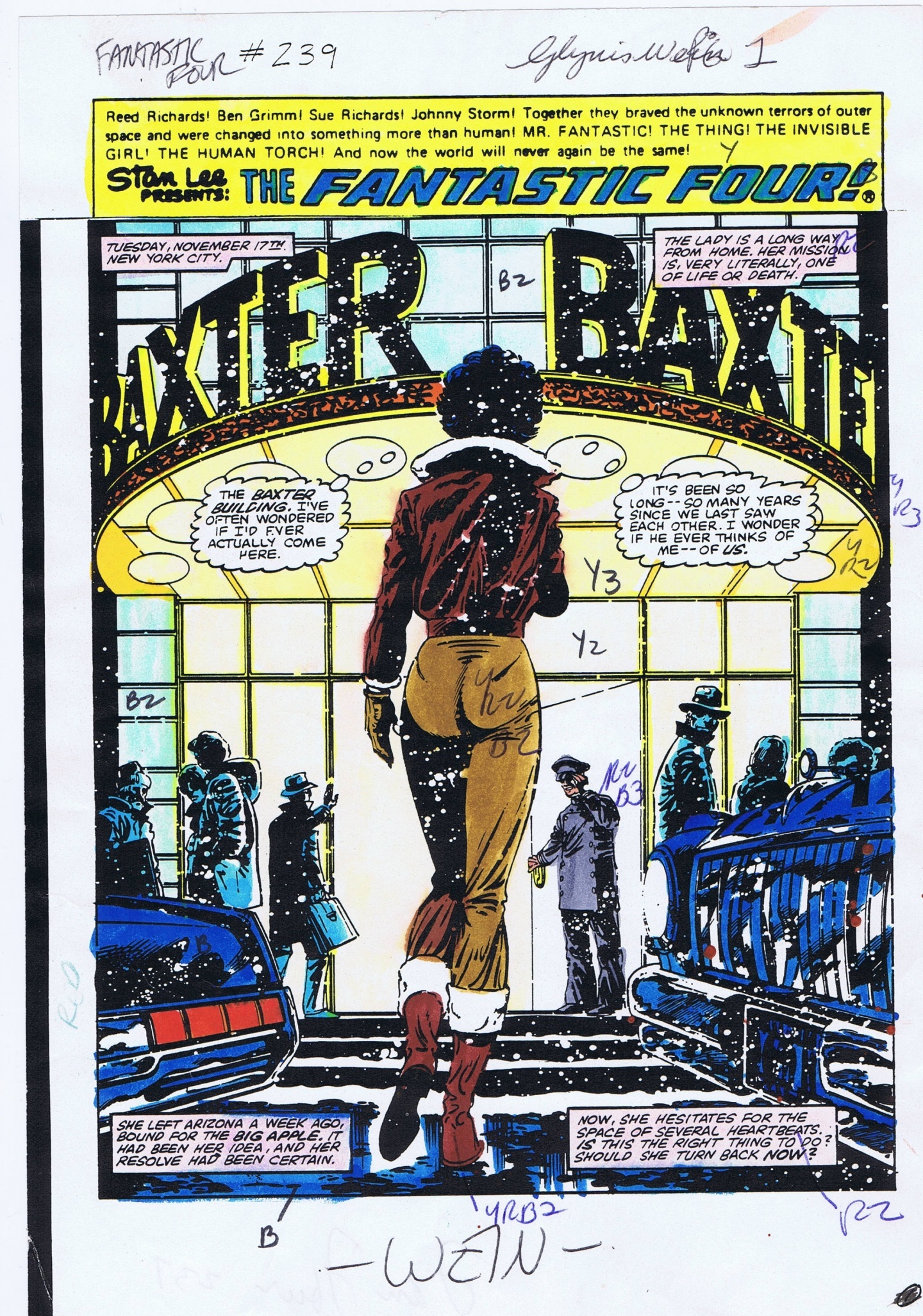
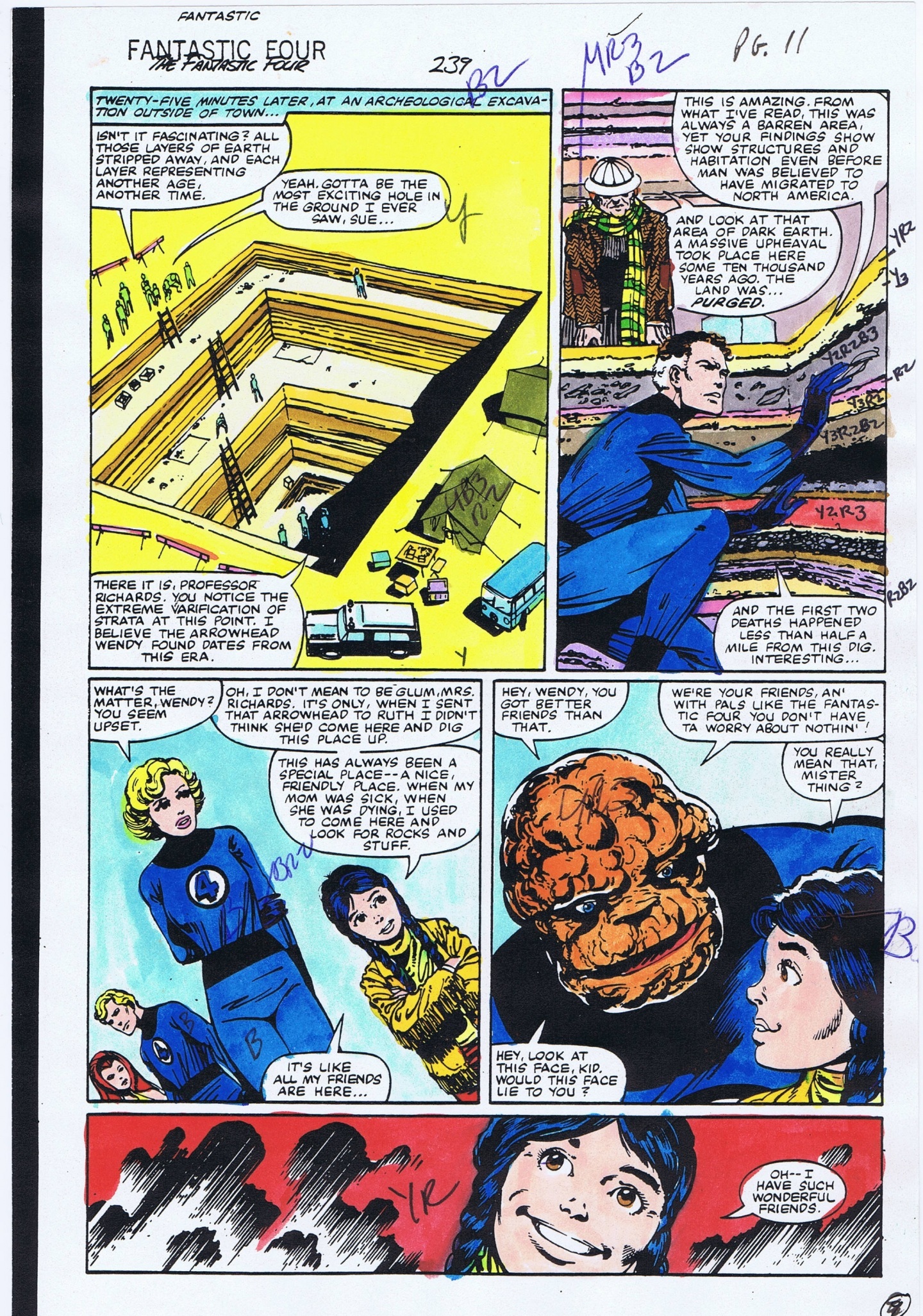
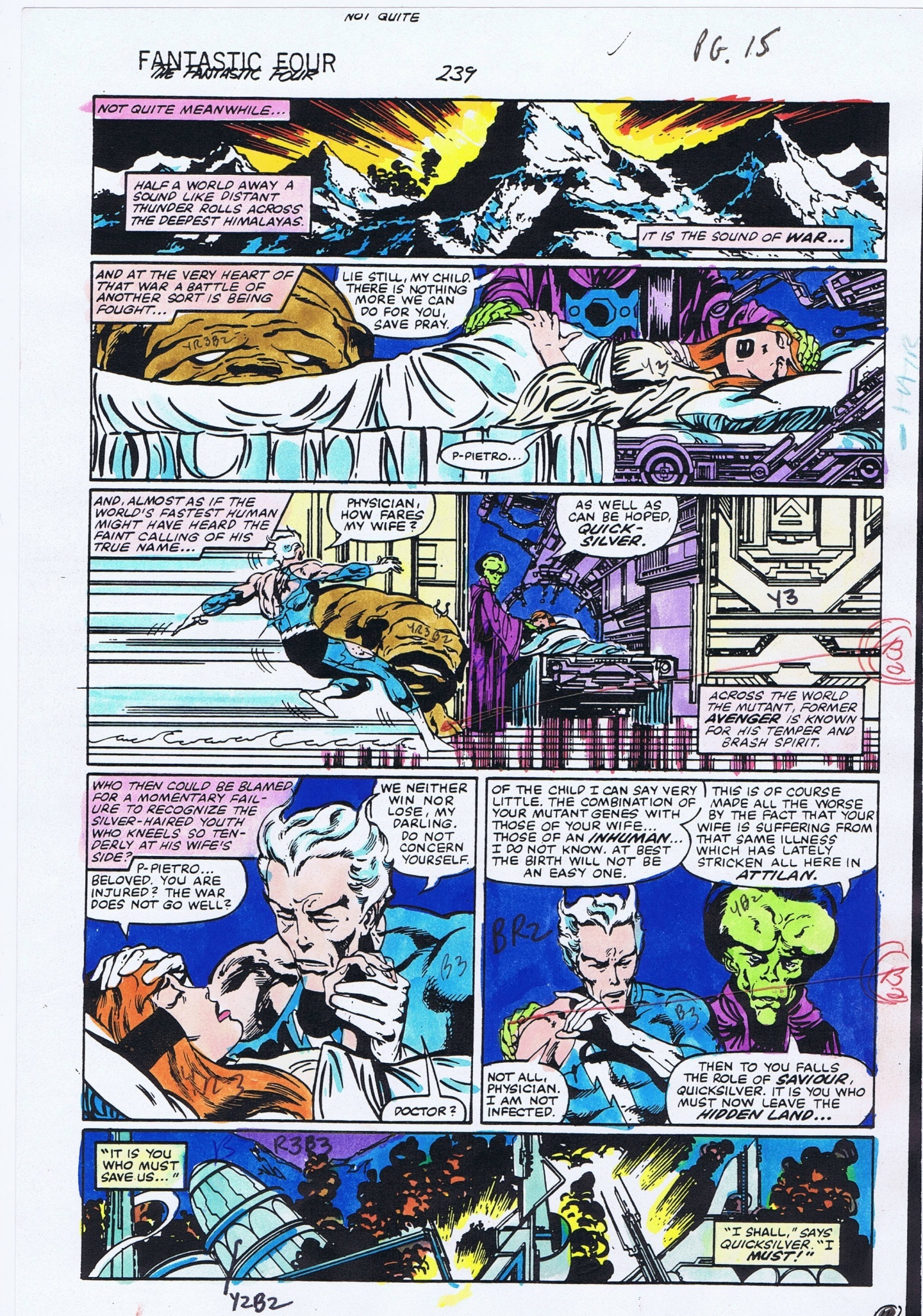
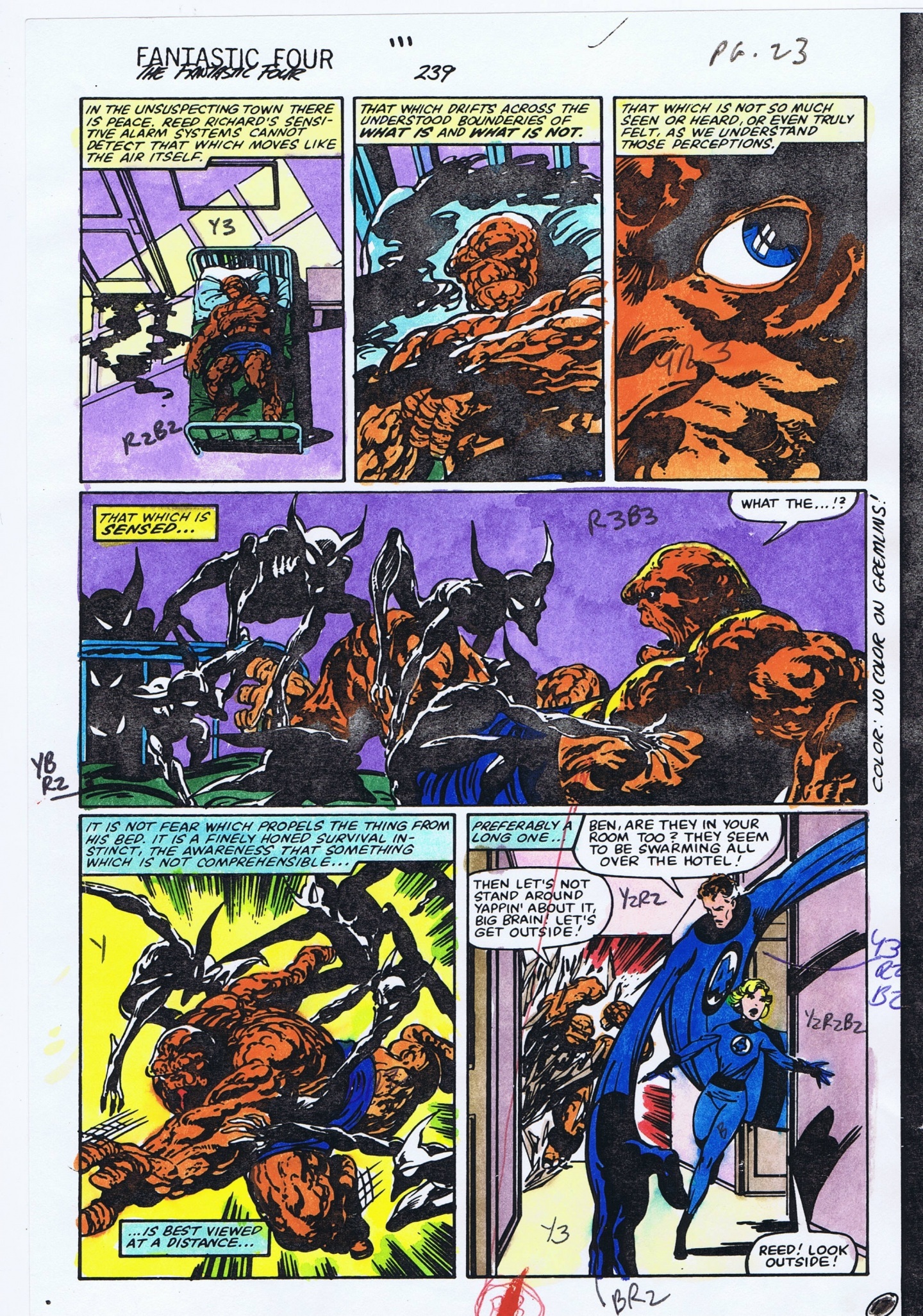
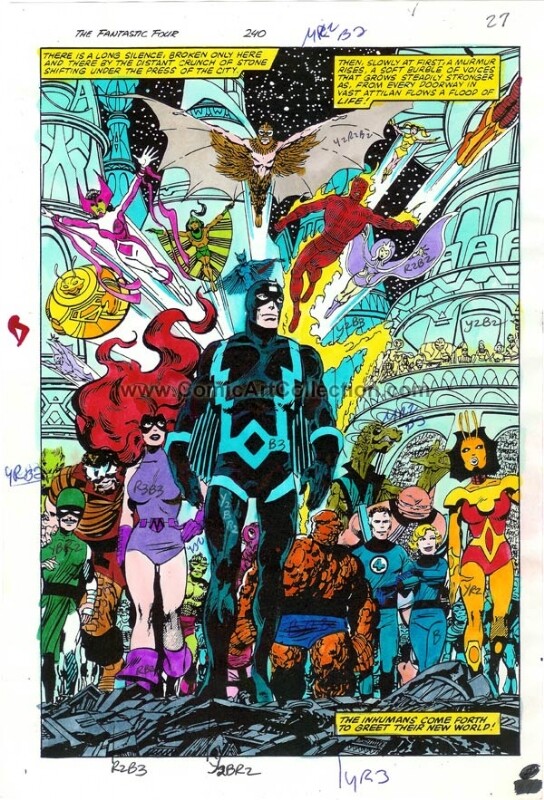
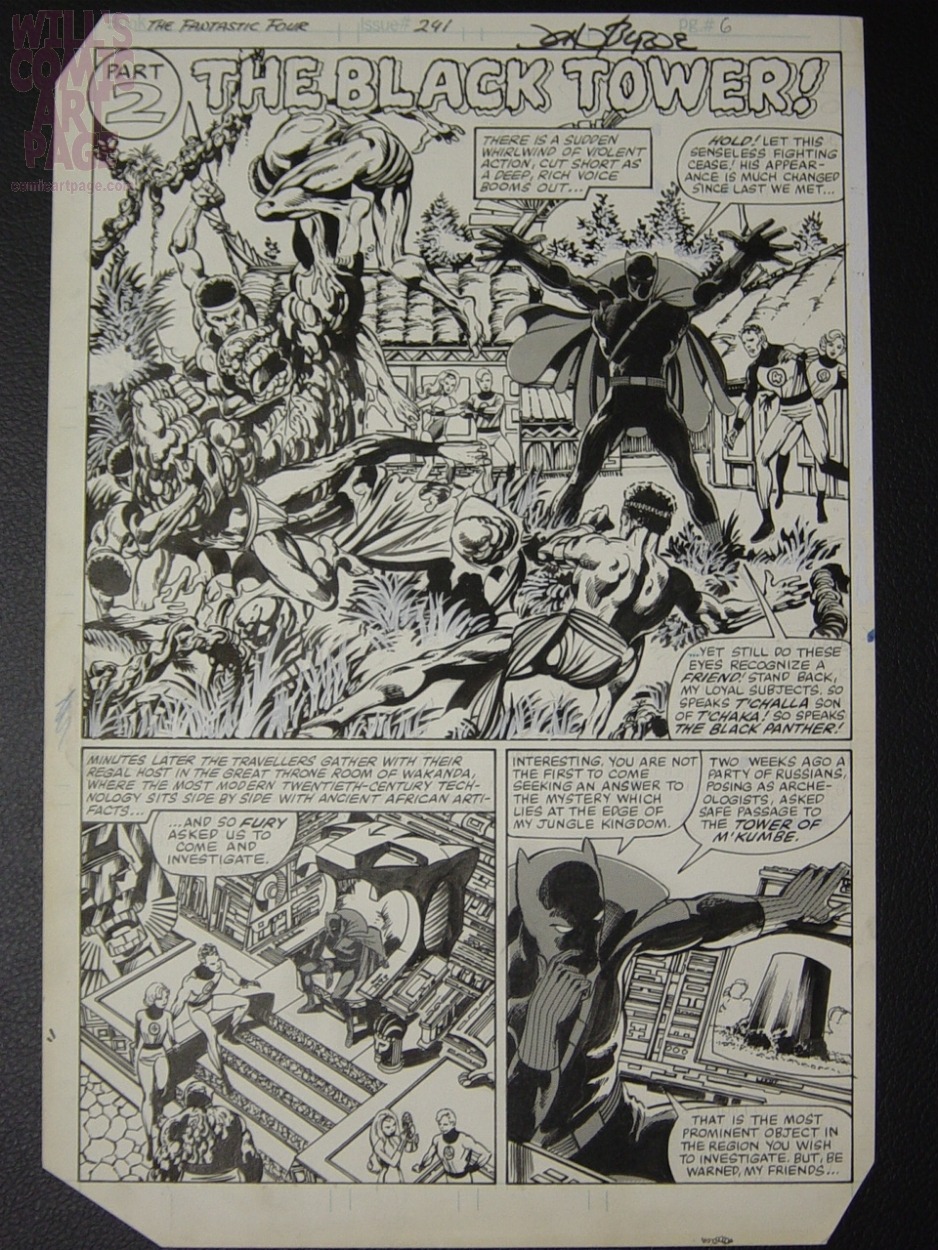
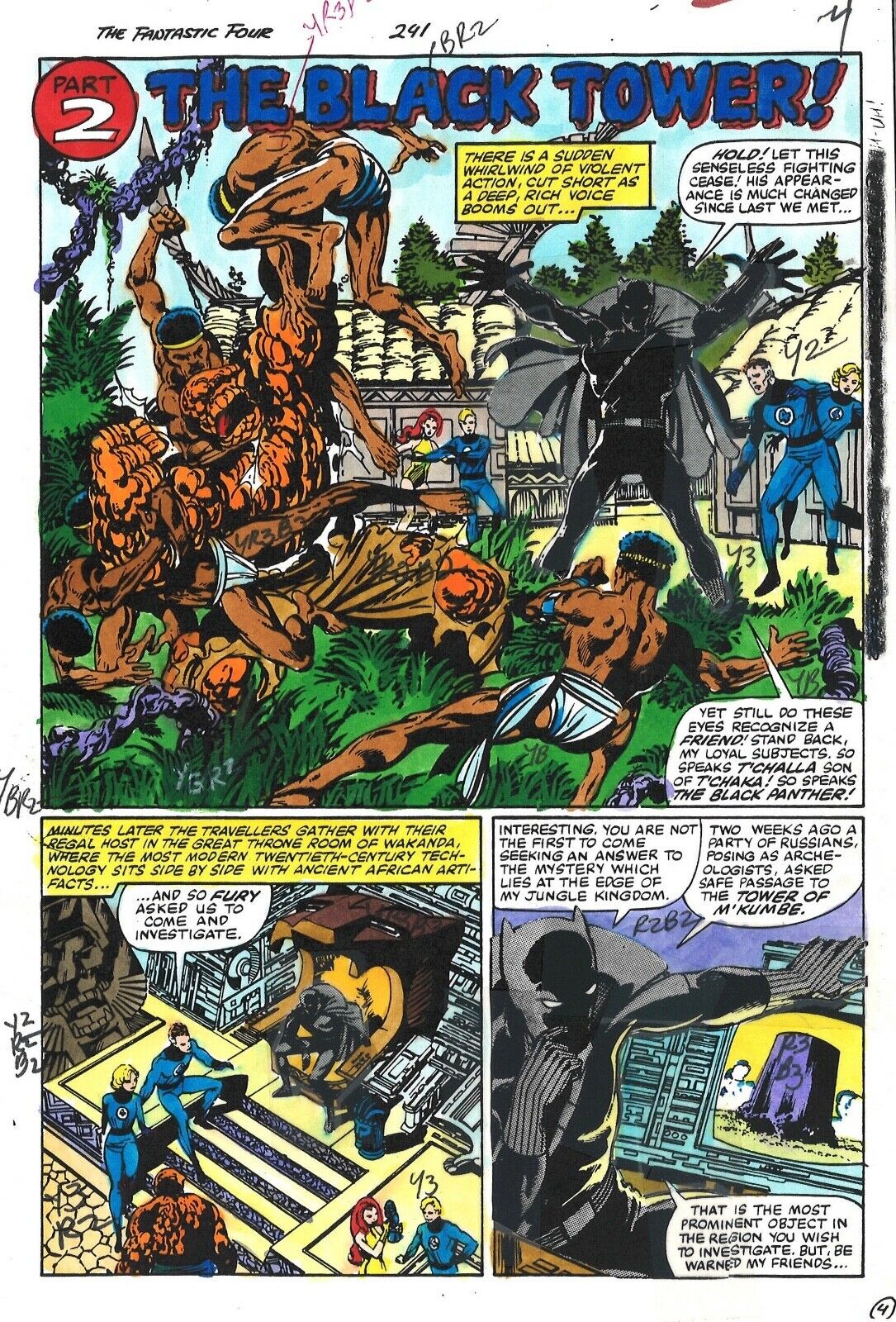

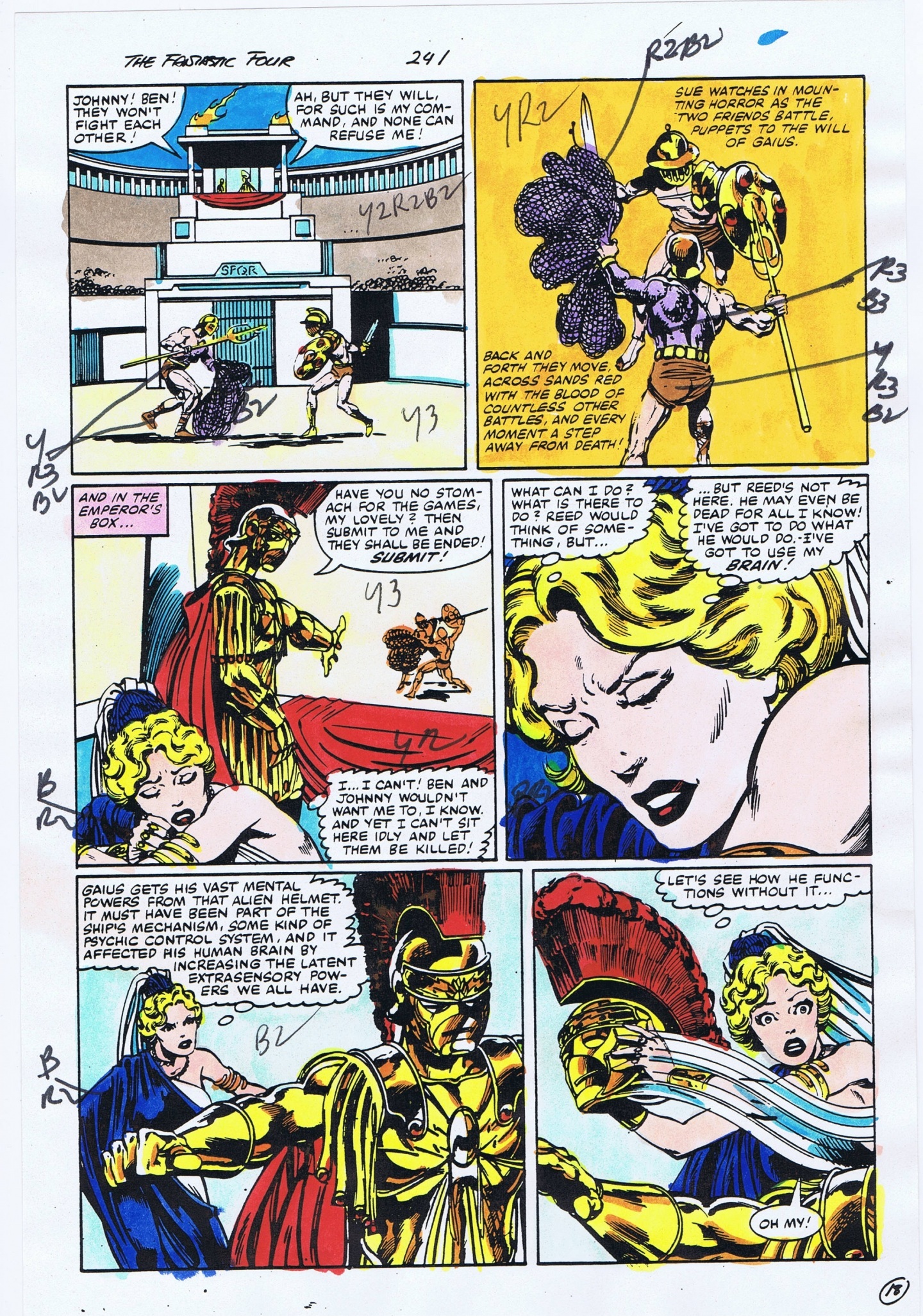
C’est quoi un color guide ?
C est pour savoir qui a le droit a la discrimination positive ?
À l’époque, c’était le travail du coloriste : il faisait les couleurs à l’aide d’encres sur une copie de la planche, puis indiquait les valeurs de chaque couleur à l’aide d’un code alphanumérique (B pour « blue », R pour « red », Y pour « yellow », le chiffre indiquant le dosage desdites couleurs).
Ce document était confié ensuite aux chromistes de l’imprimeur, qui transcrivaient cela sur les films d’impression, en suivant les indications.
Quand l’informatique est arrivée, il fut un temps où le métier de coloriste était divisé en deux catégories : le coloriste qui faisait les « guides couleurs », et le séparateur qui transcrivait ces indications sur le fichier informatique qui servait à fabriquer des films d’impression (en passant par le flasheur, donc c’était le métier). Avec l’avènement de studios de colorisations, genre Liquid, ces deux métiers ont été fondus en un seul.
Et désormais, on n’a même plus de films d’impression, donc le flasheur, ça n’existe quasiment plus. Les éditeurs envoient les fichiers à l’imprimeur (ou alors passent par une société intermédiaire, qui fait le contrôle fabrication et l’interface entre éditeur et imprimeur s’il y a un souci).
Jim
Chuis con (oui, c’est pas nouveau), je regardais le dessin, pas les commentaires.
Merci pour les explications.
Et ce n’est pas la première fois que Jim donne ces explications…
Tori.
Oui, c’est aussi ce que je me disais, mais je ne voulais pas passer pour celui qui n’écoute pas.
Et comme tout le monde sait que je radote, ça n’a pas d’importance.
Jim
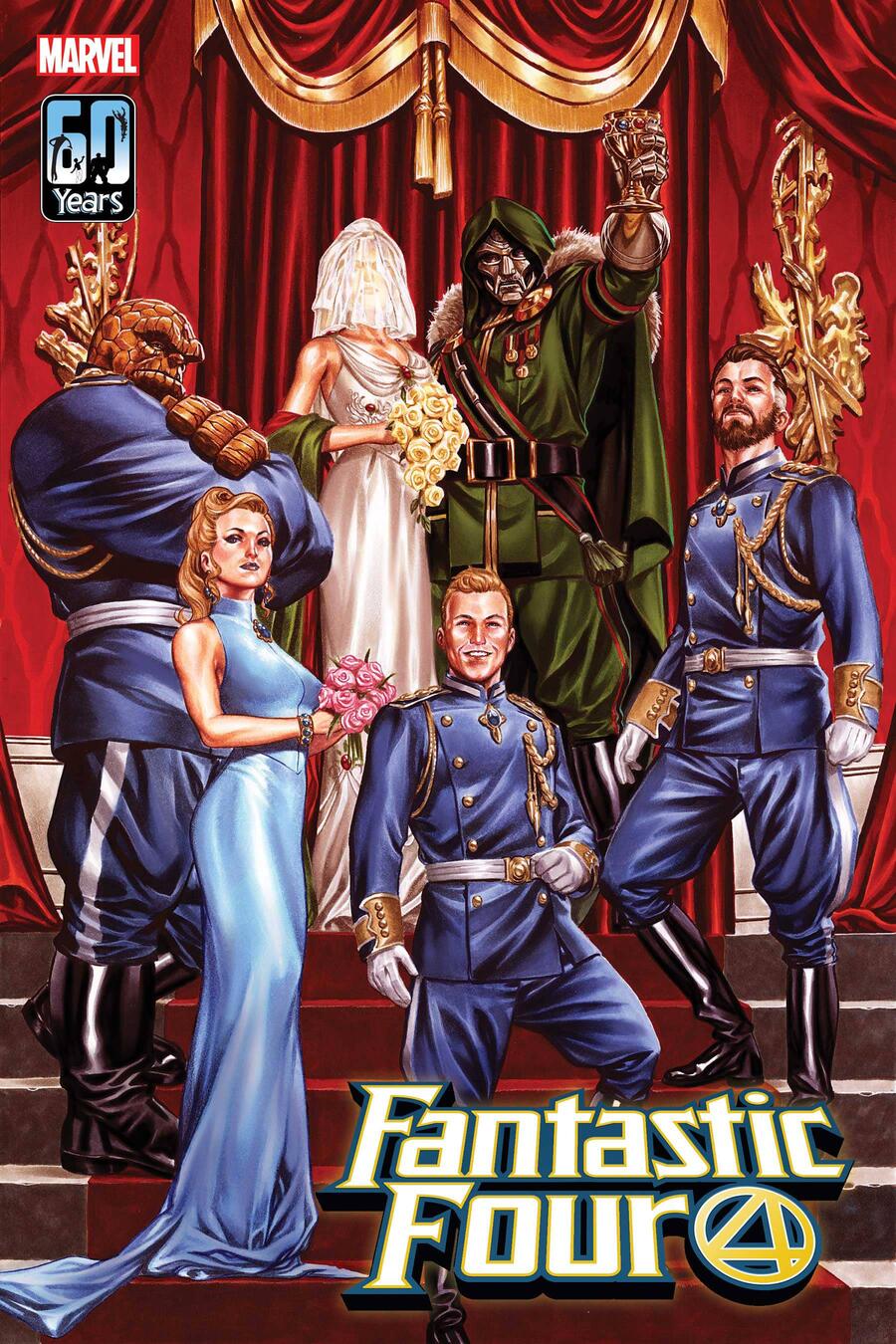
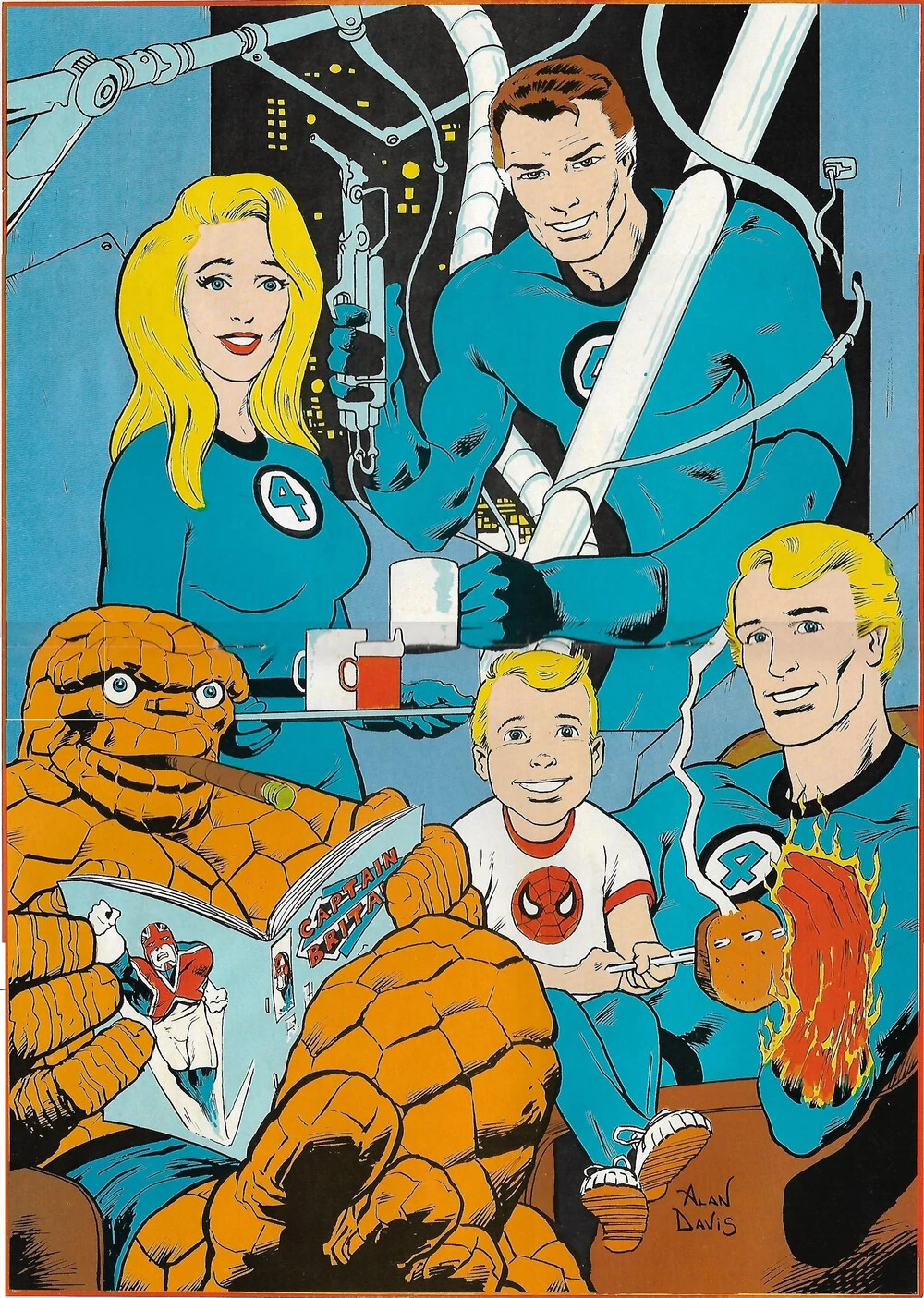

Je ne sais plus si on a posté ça :
